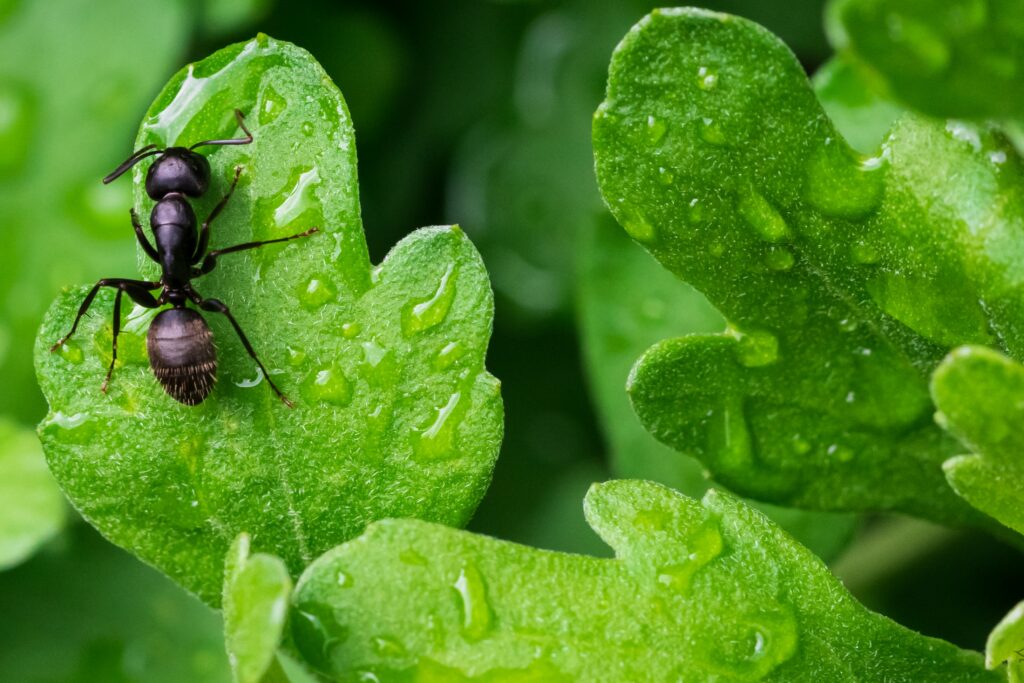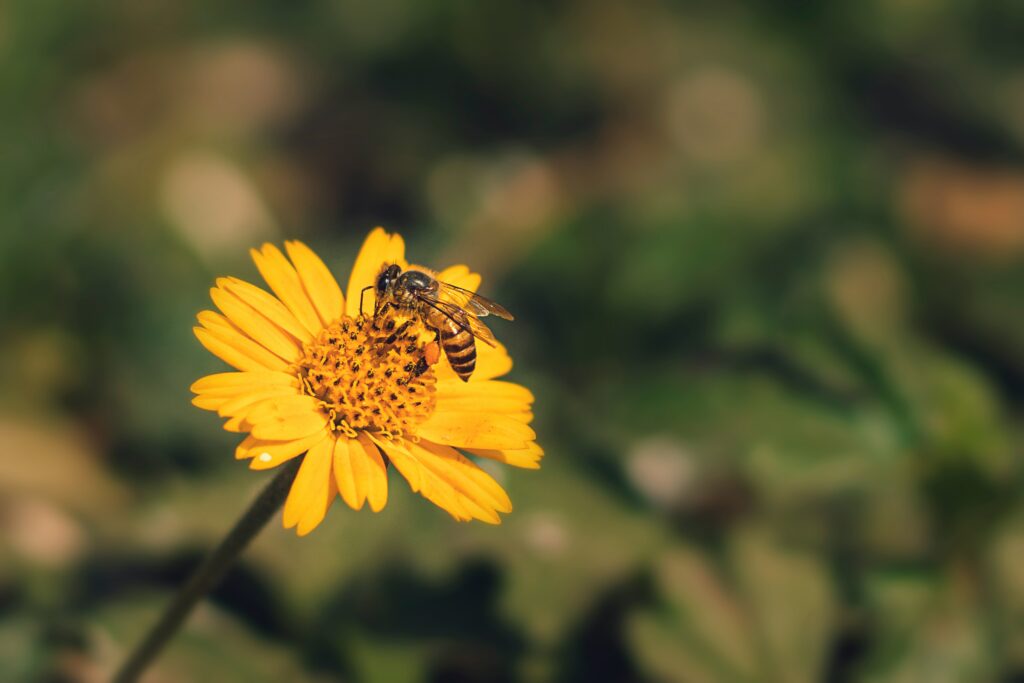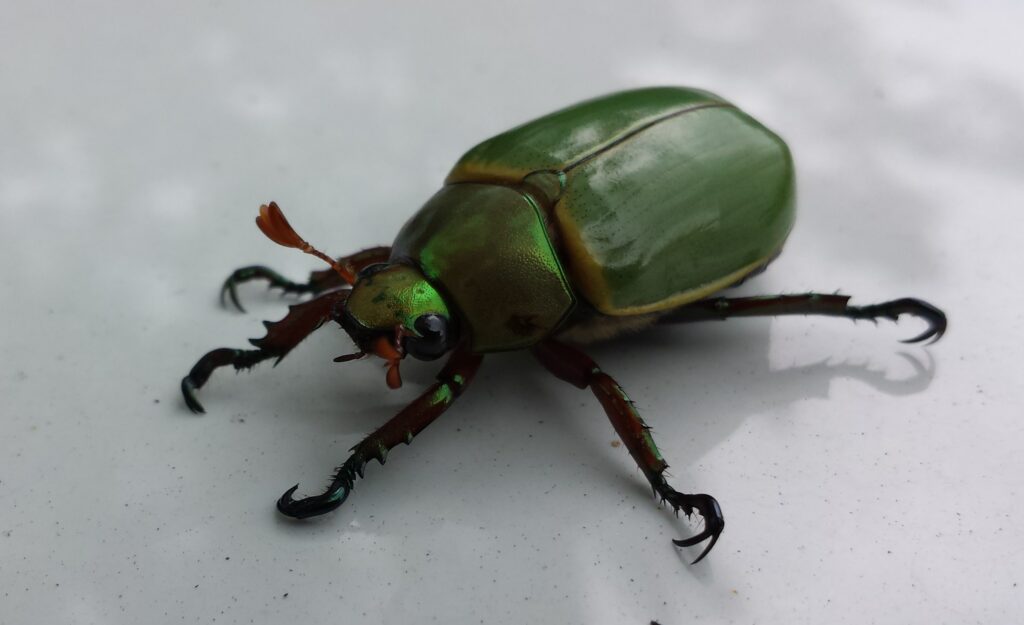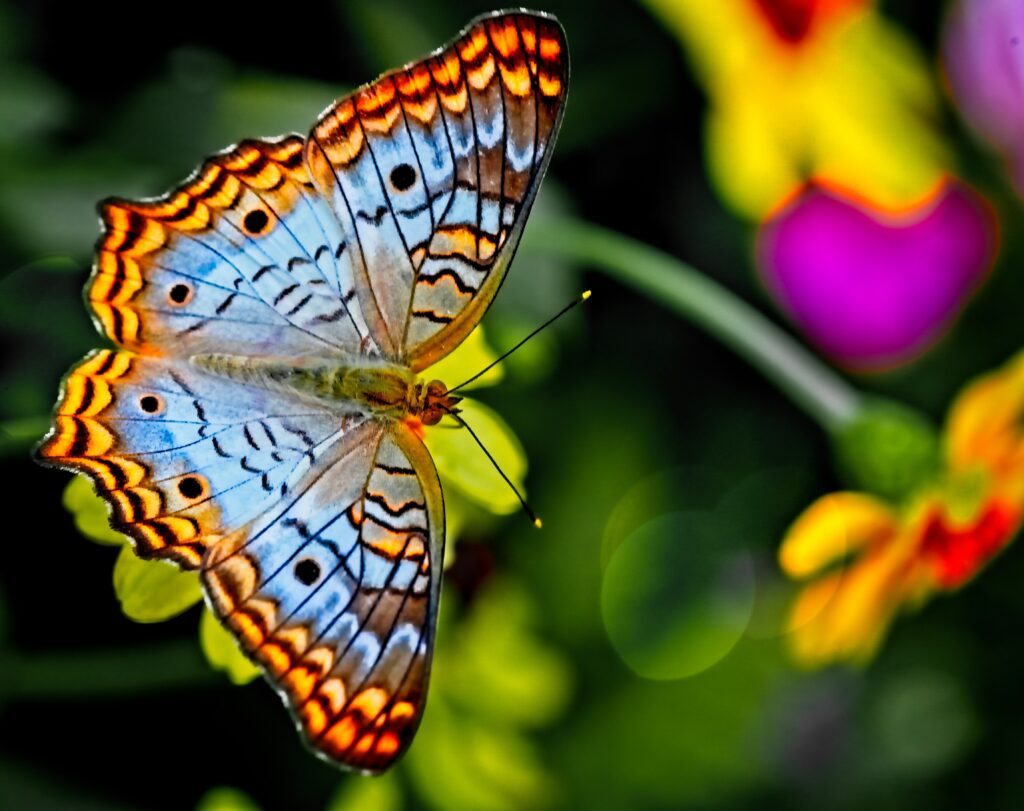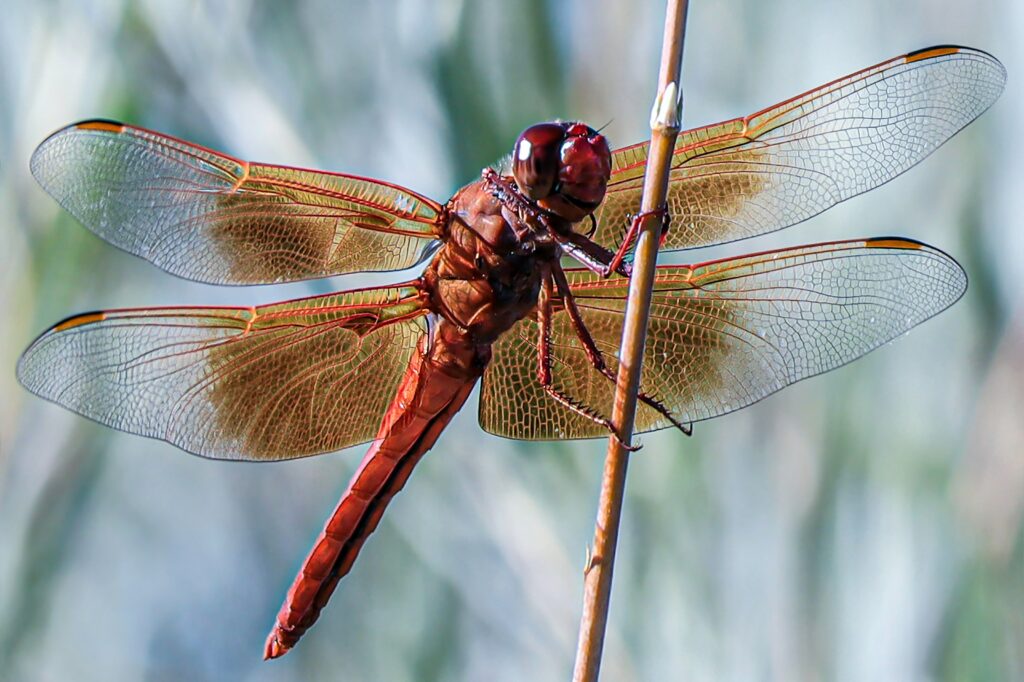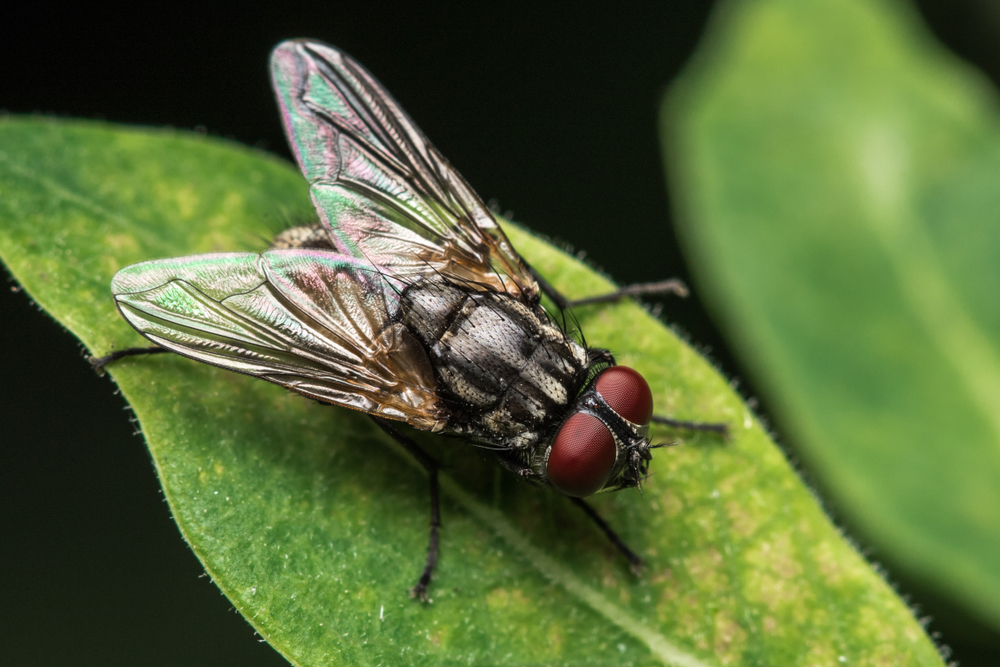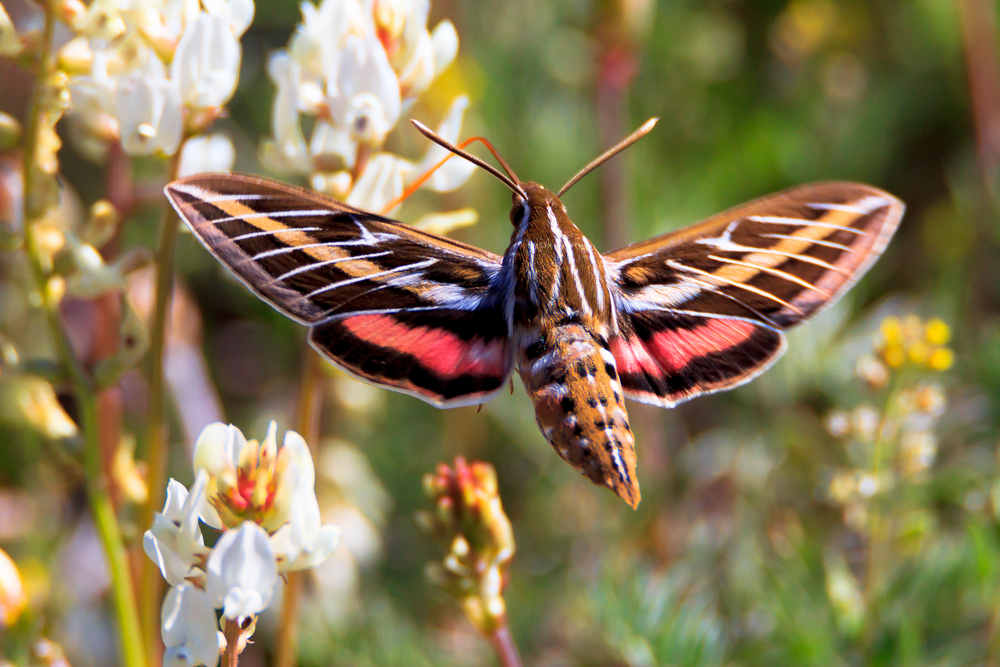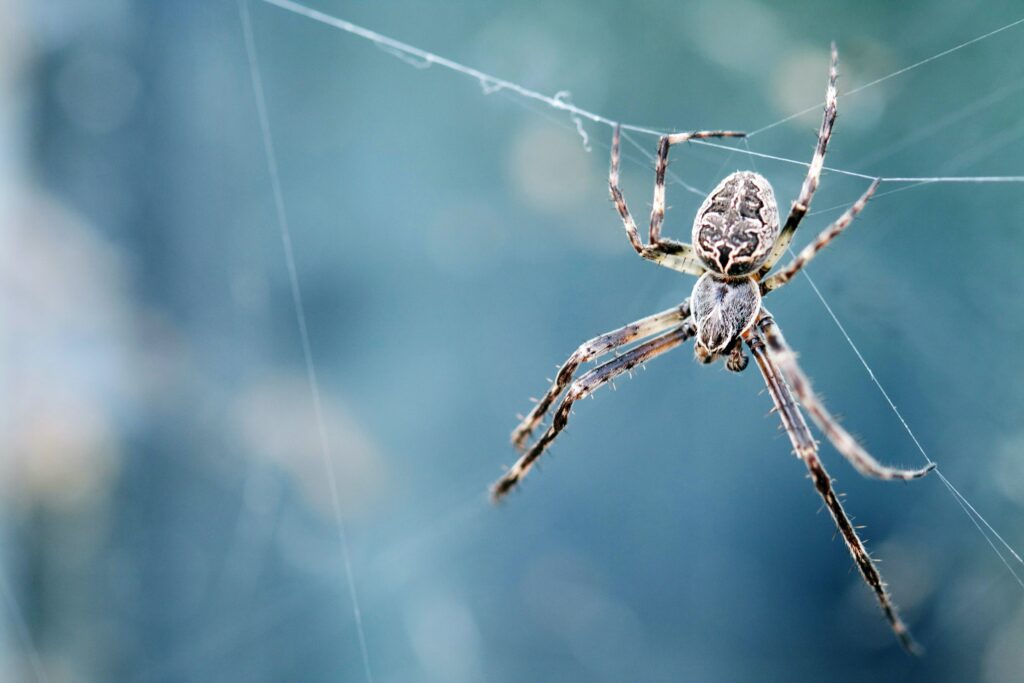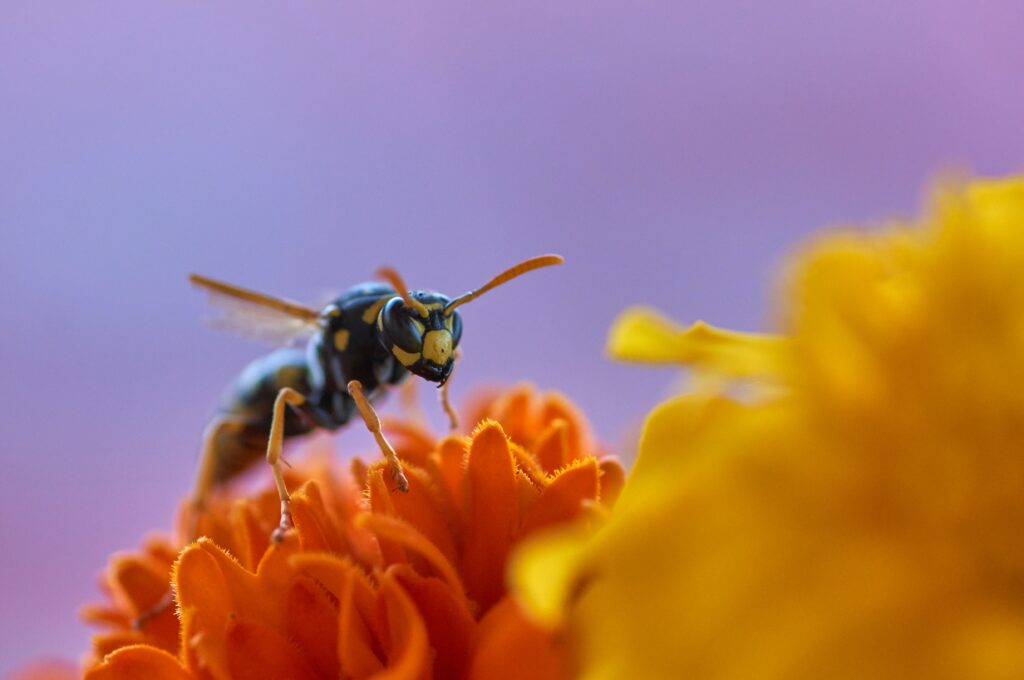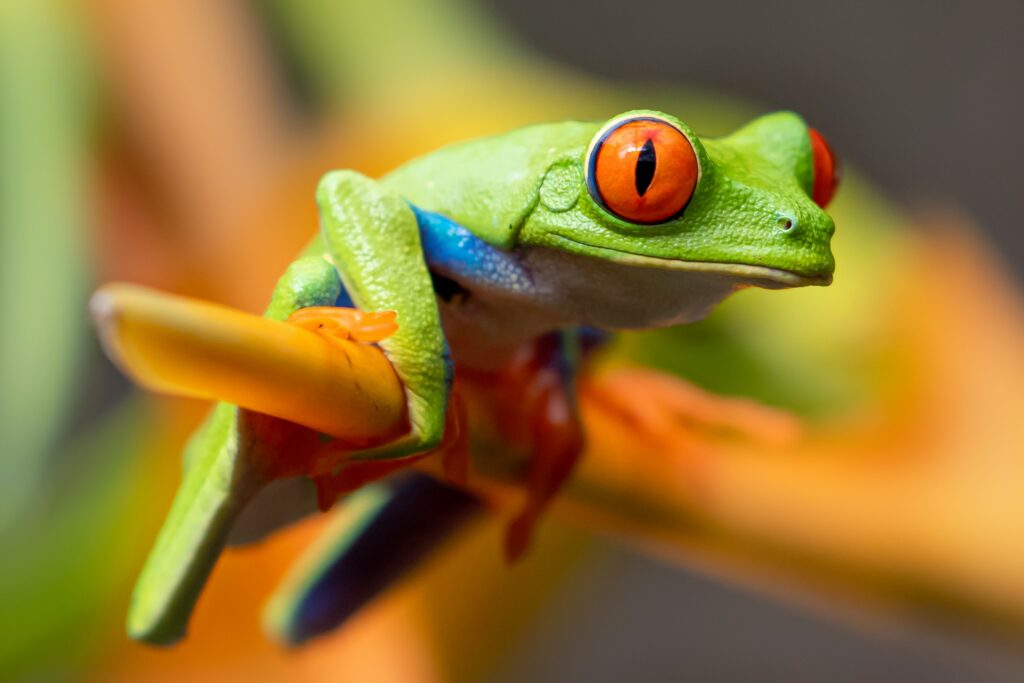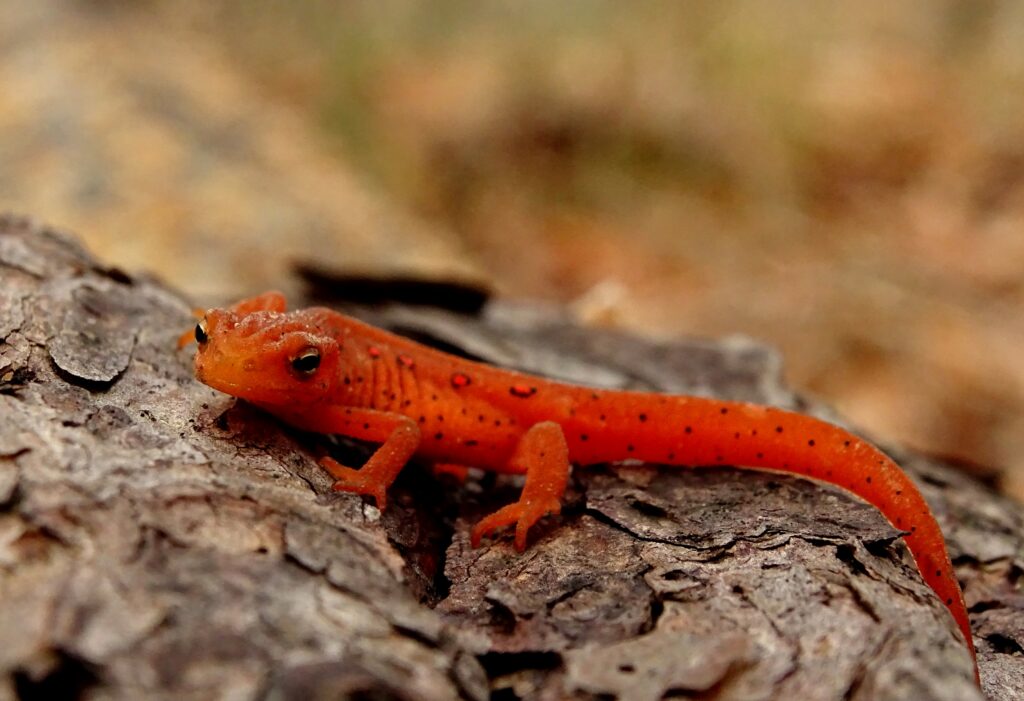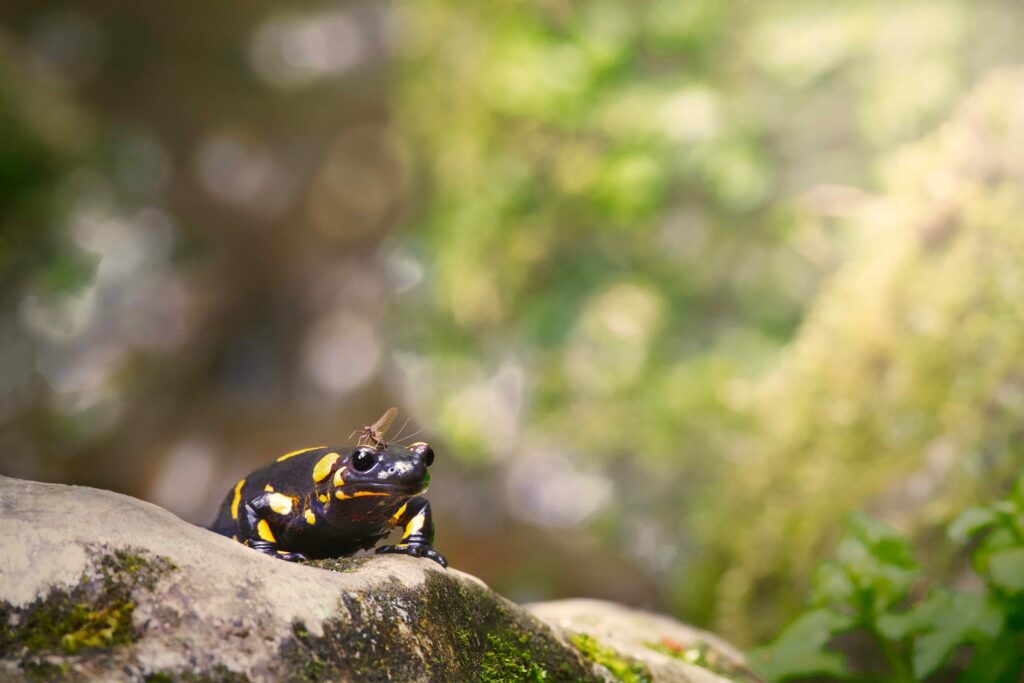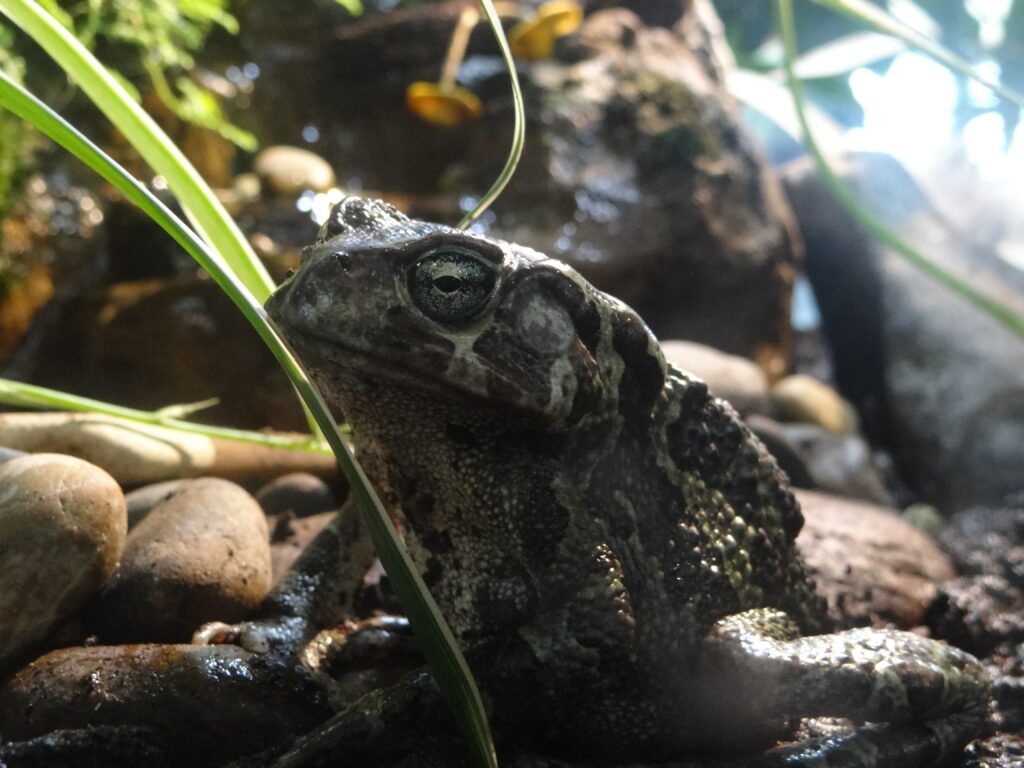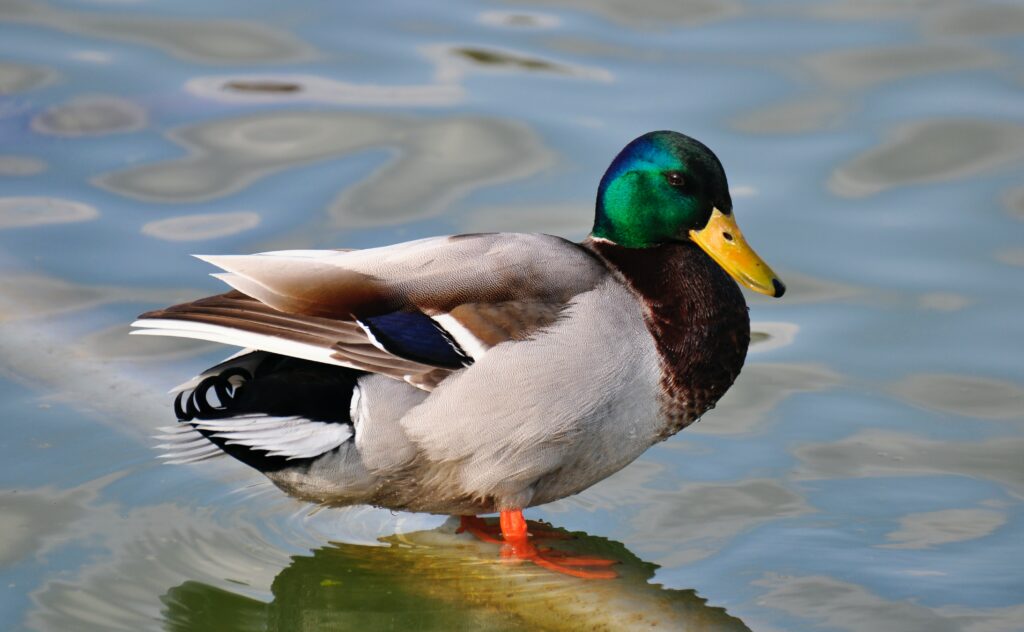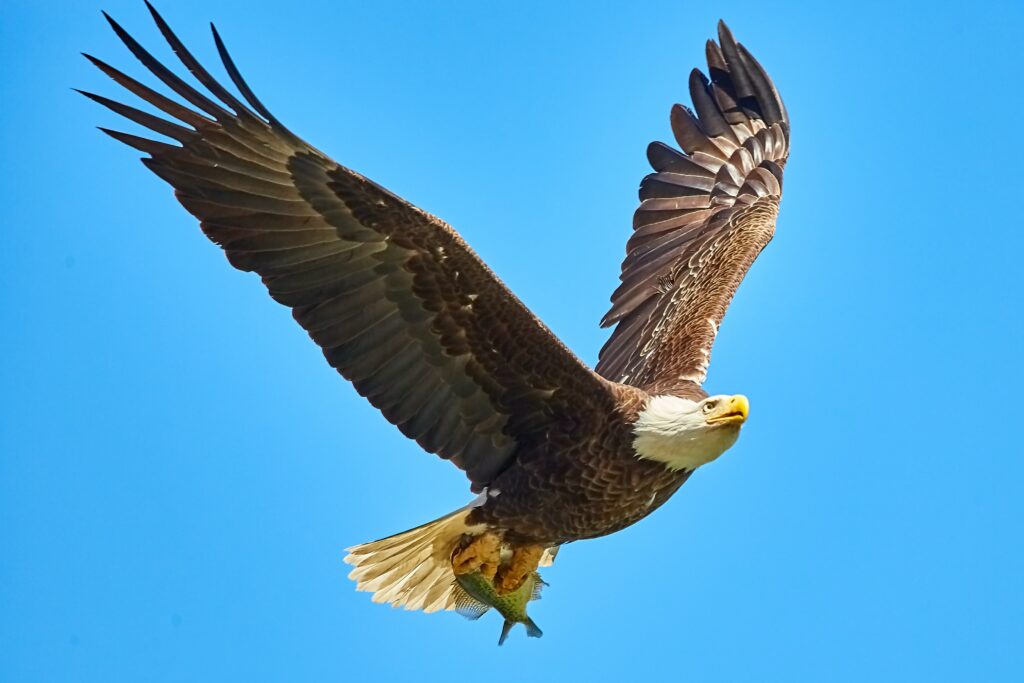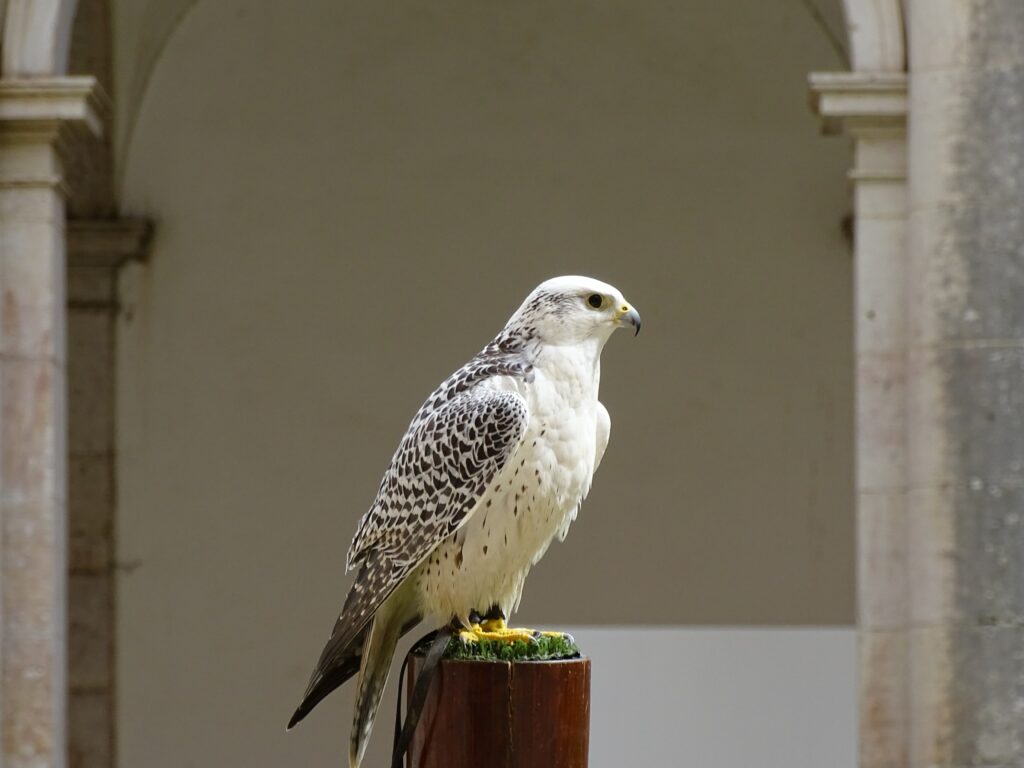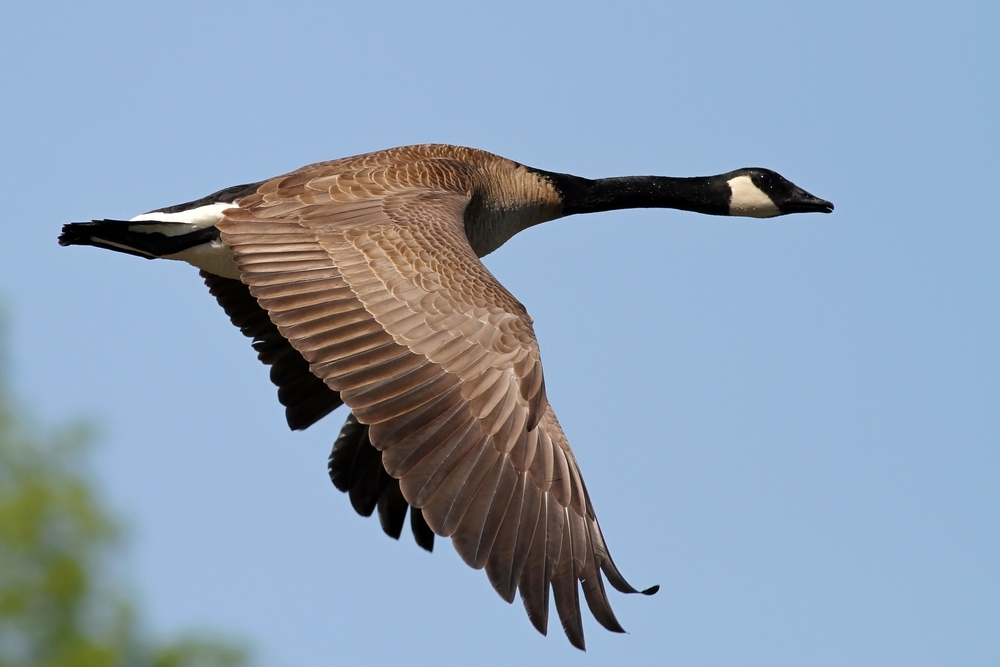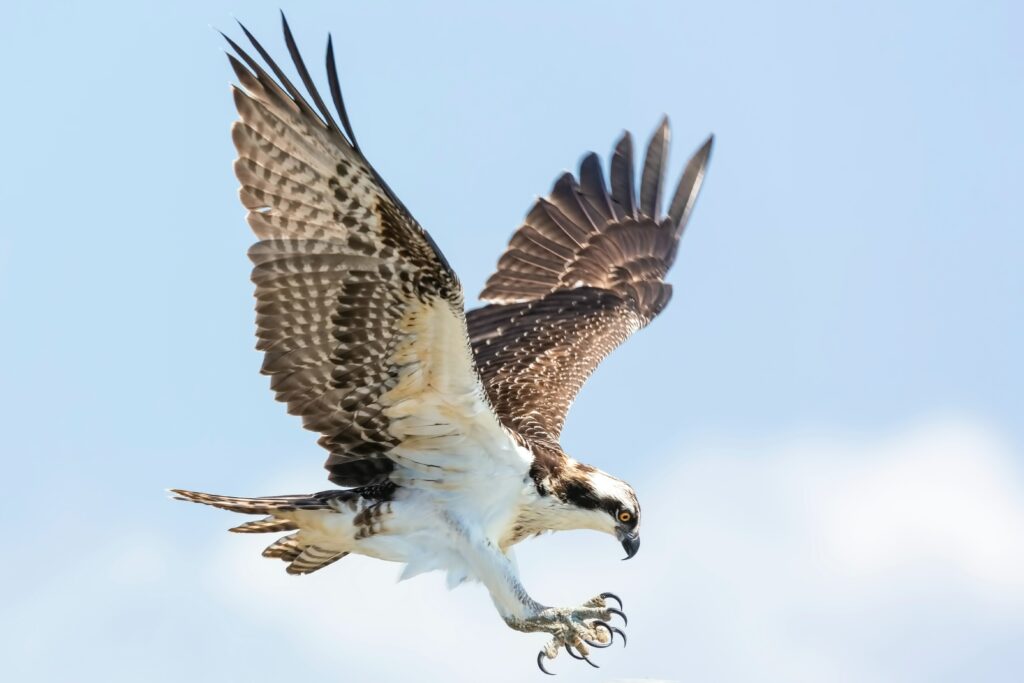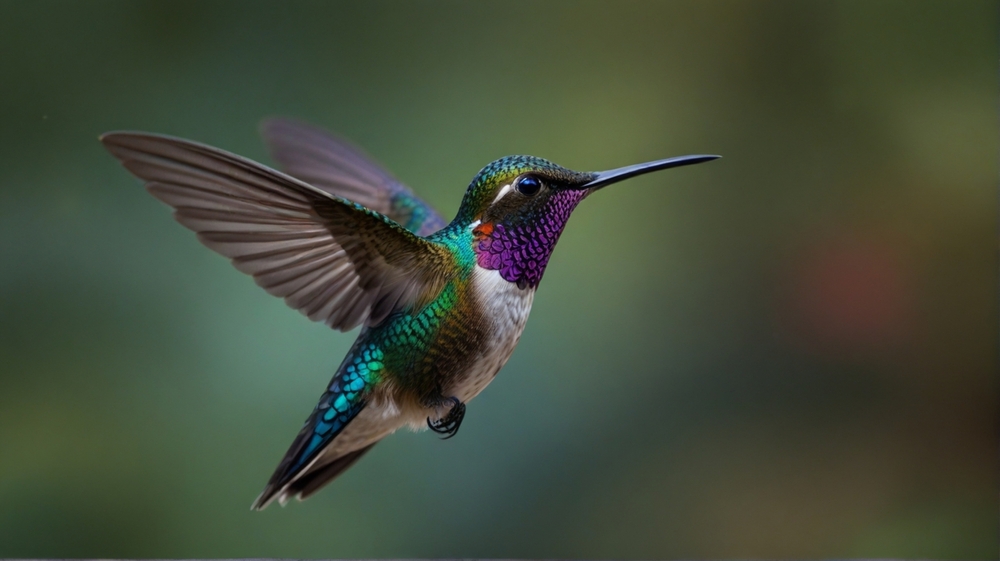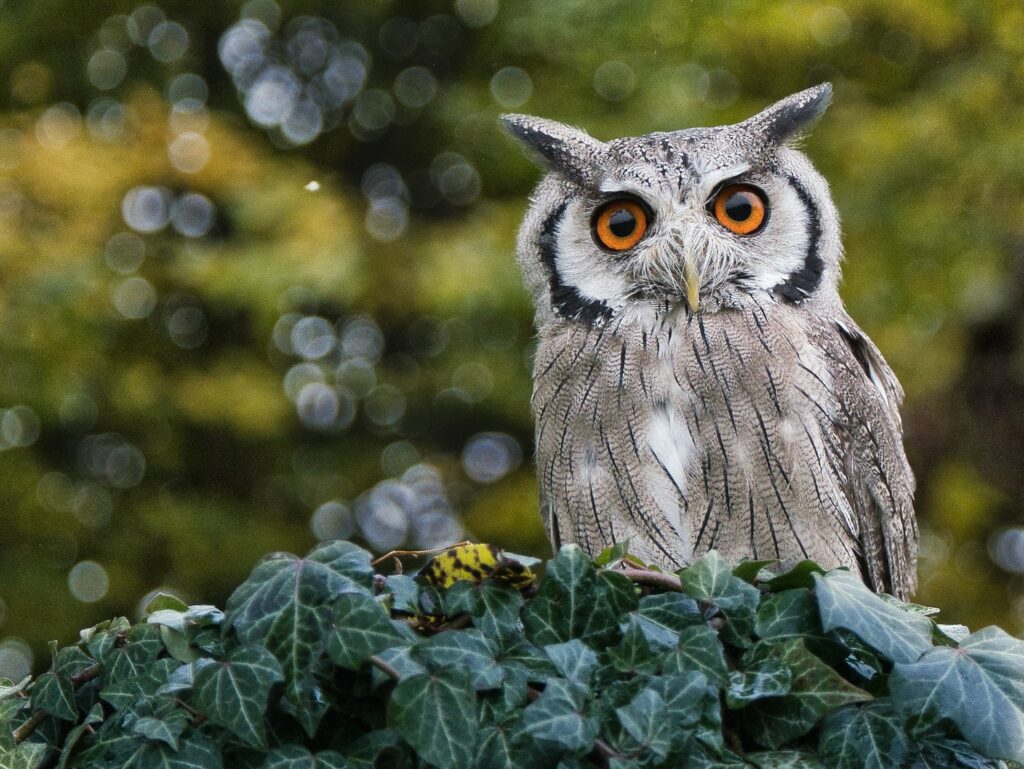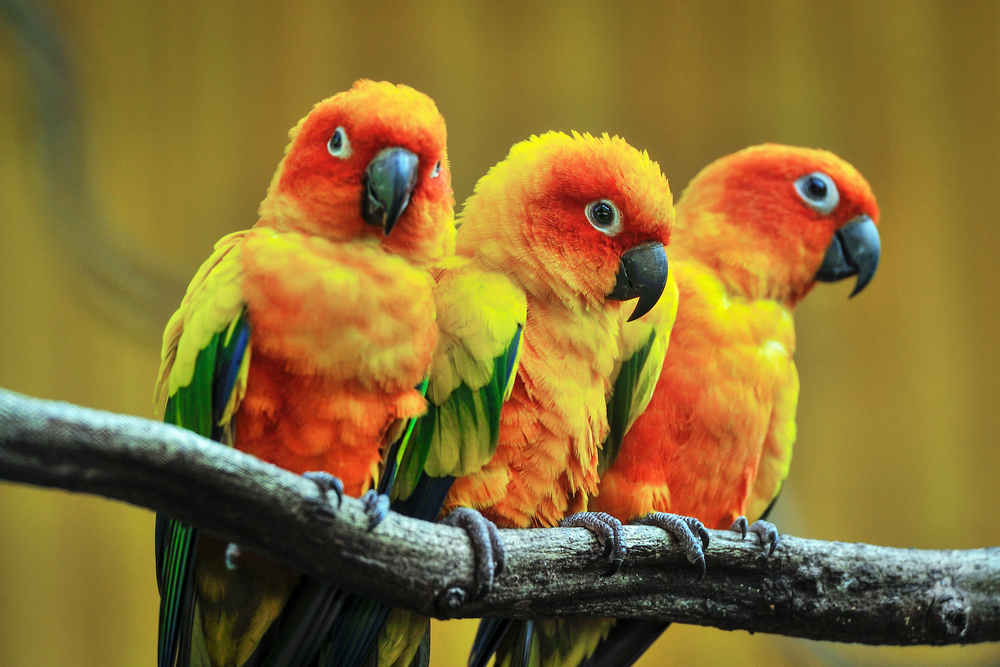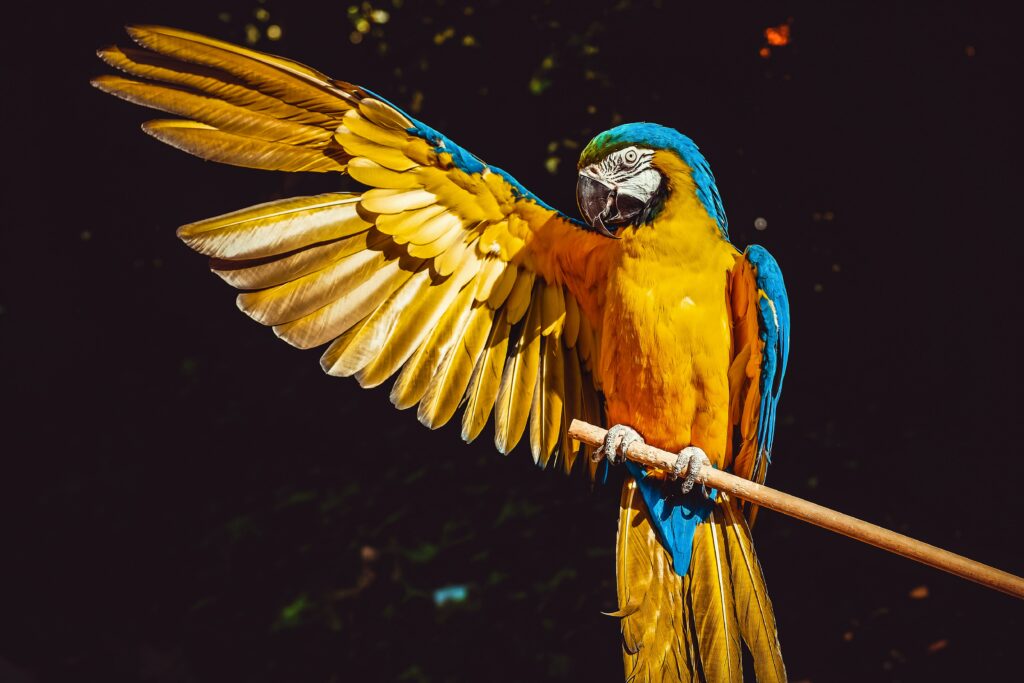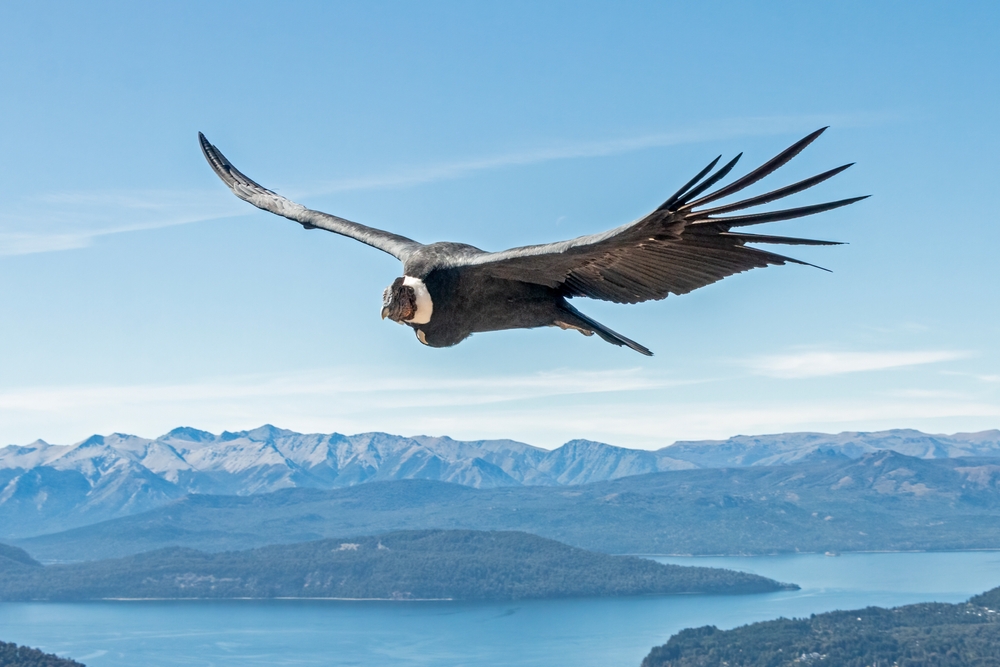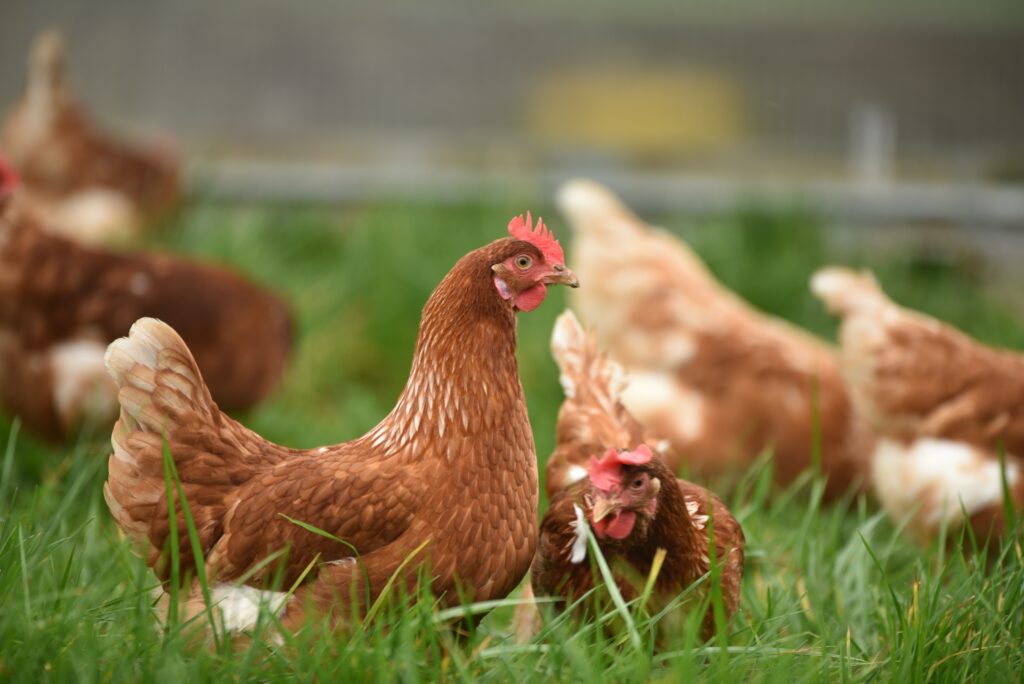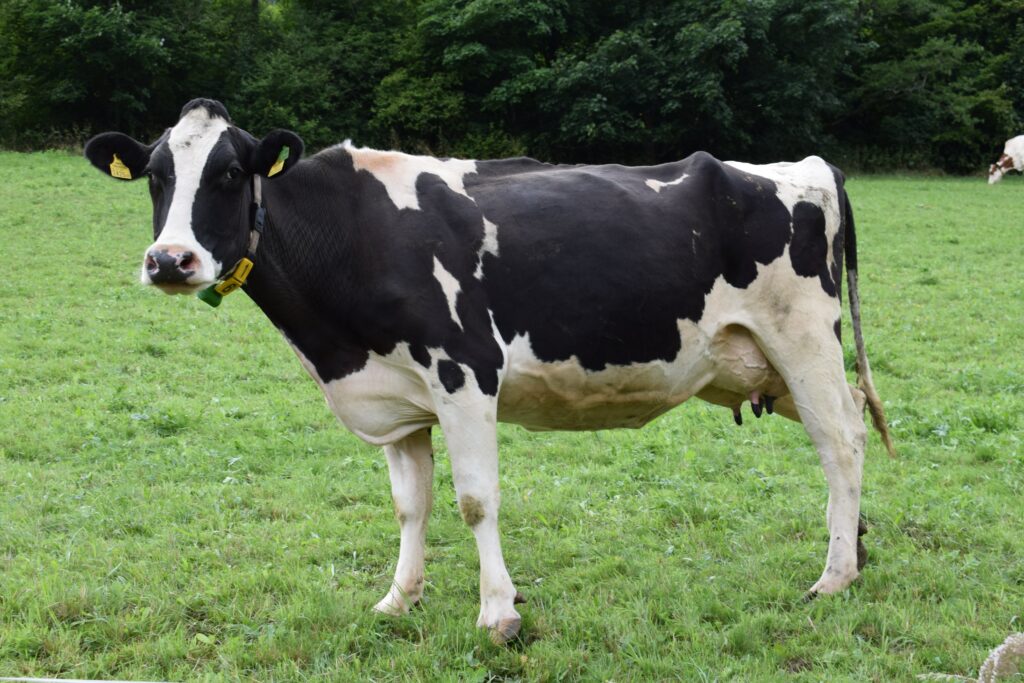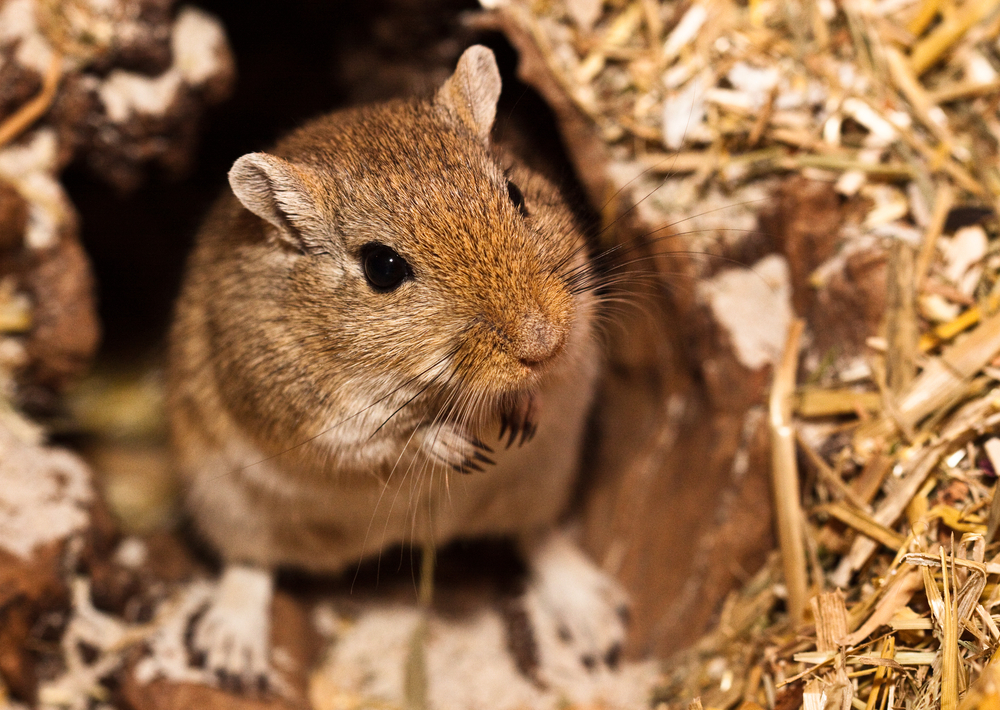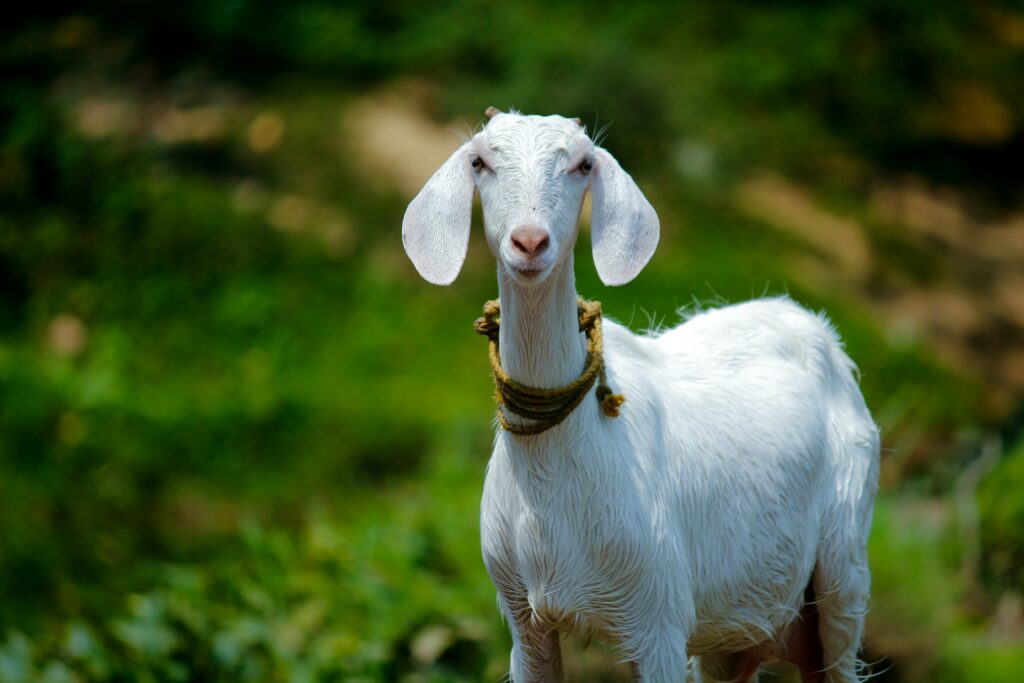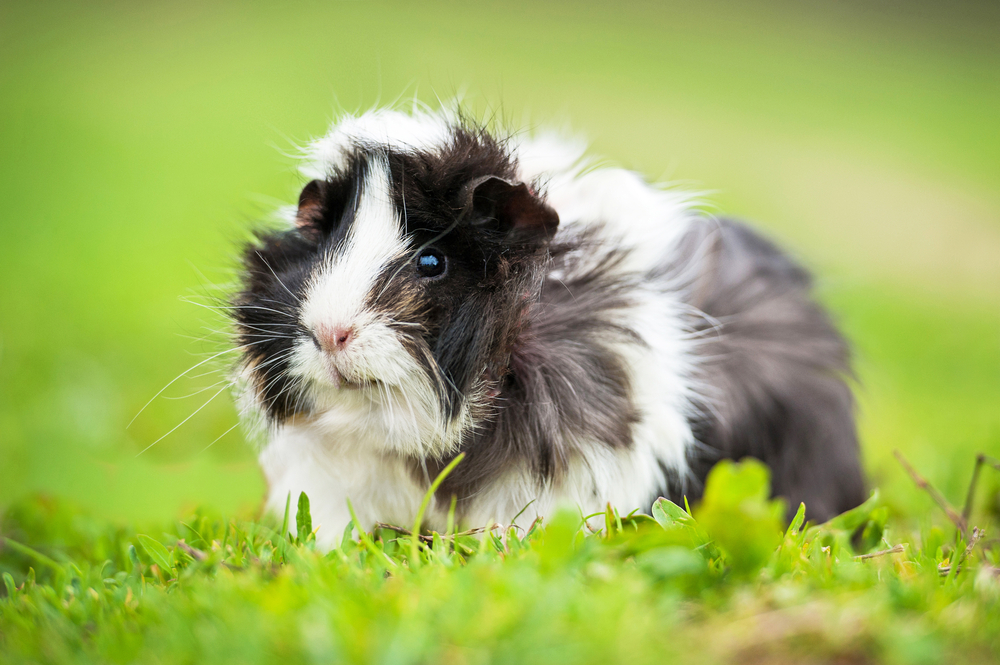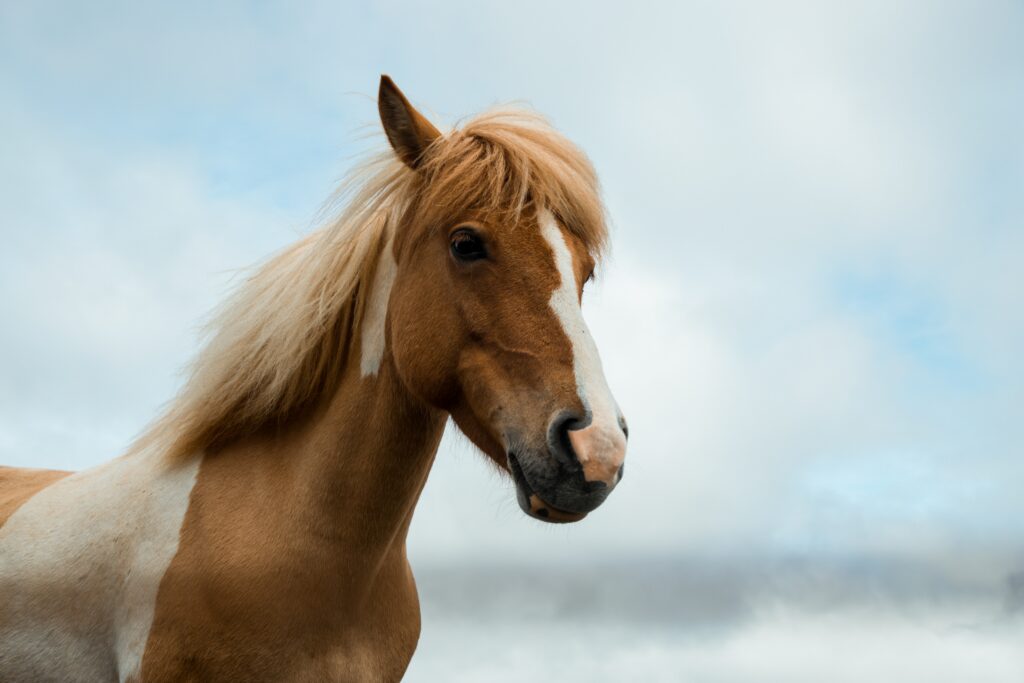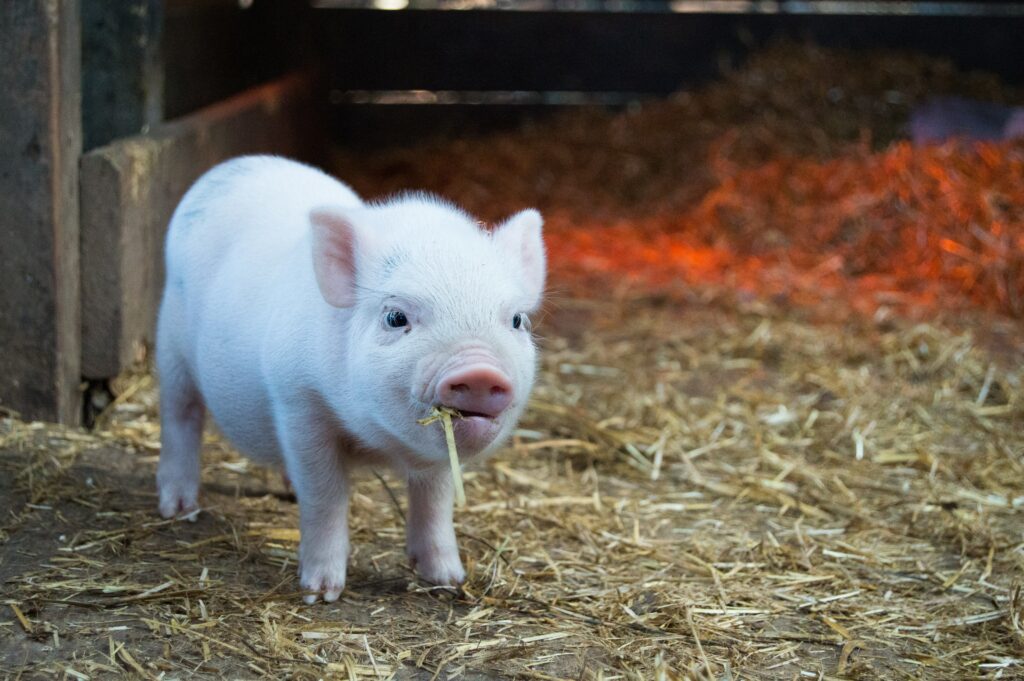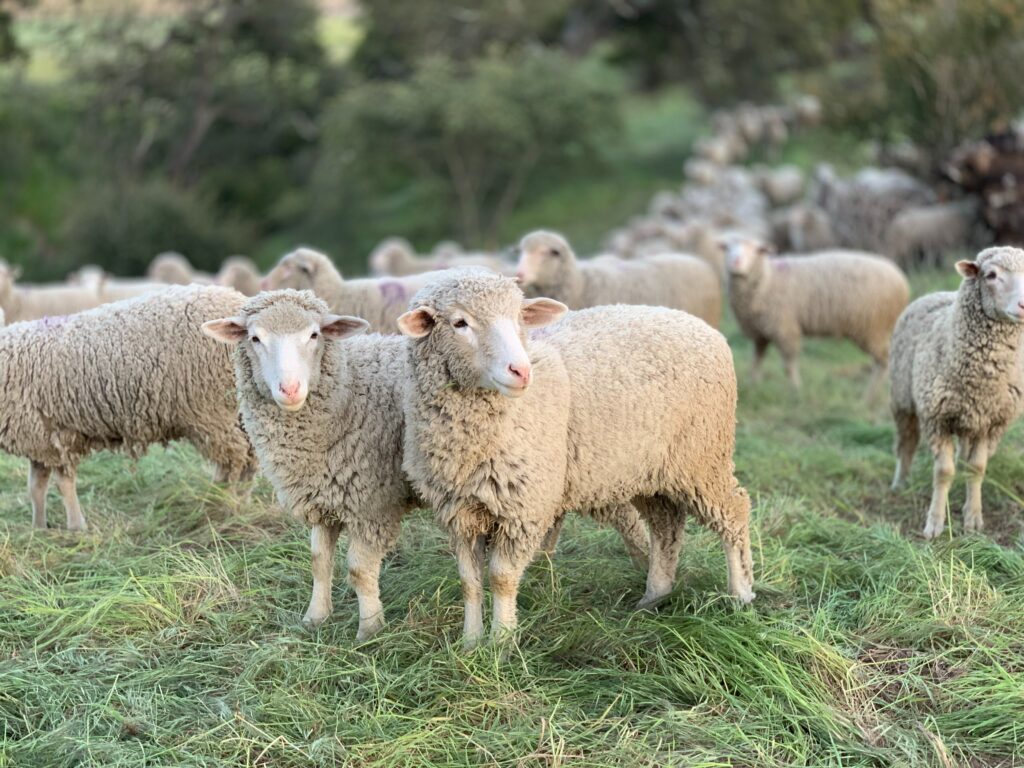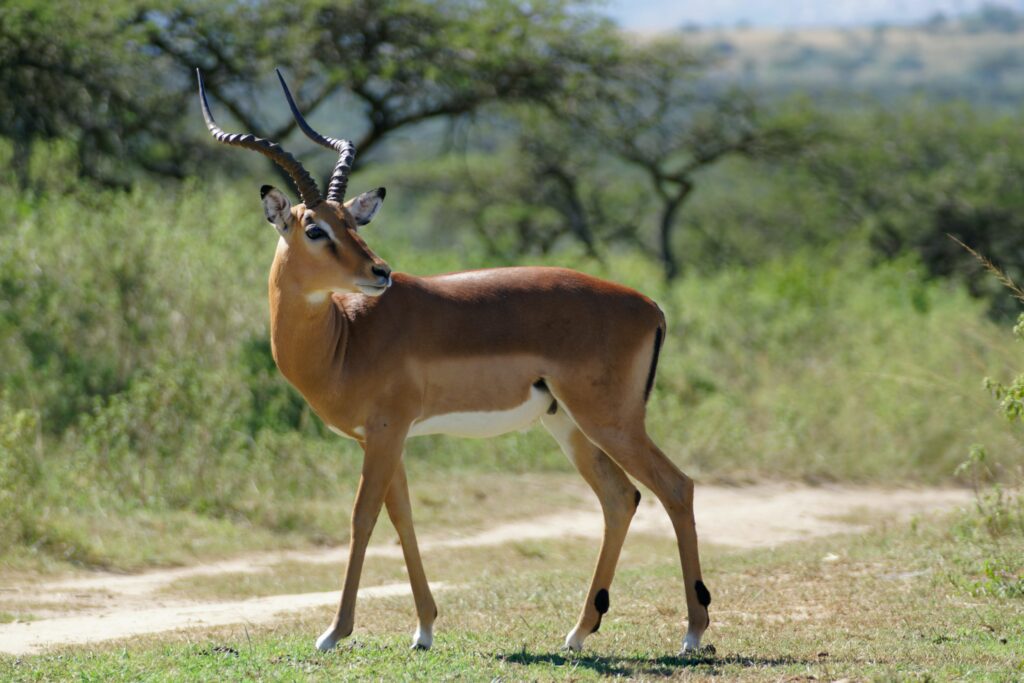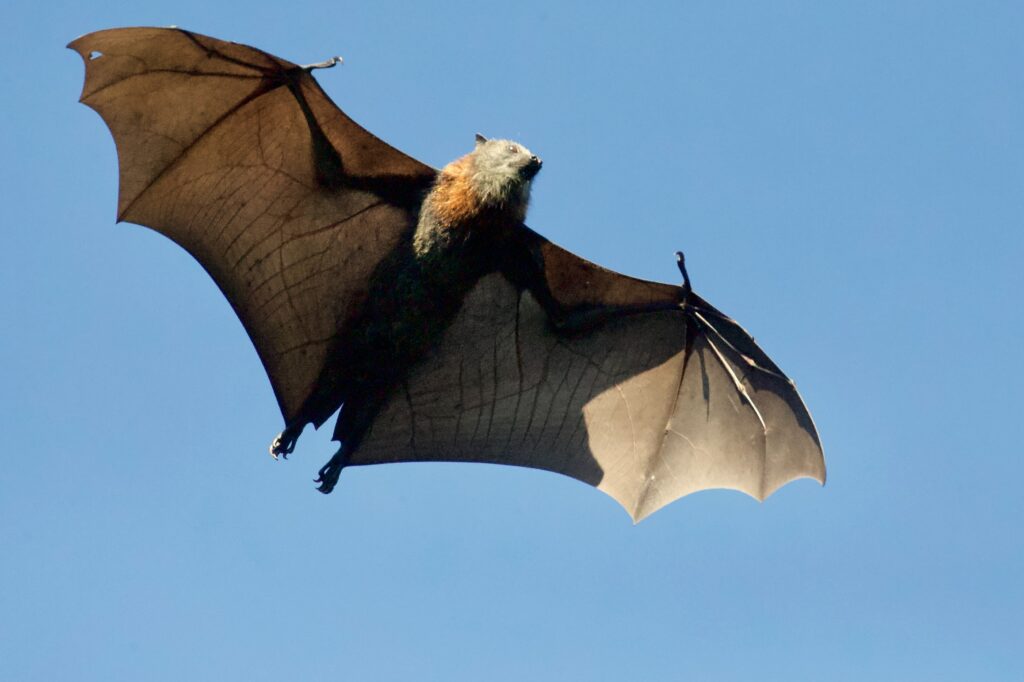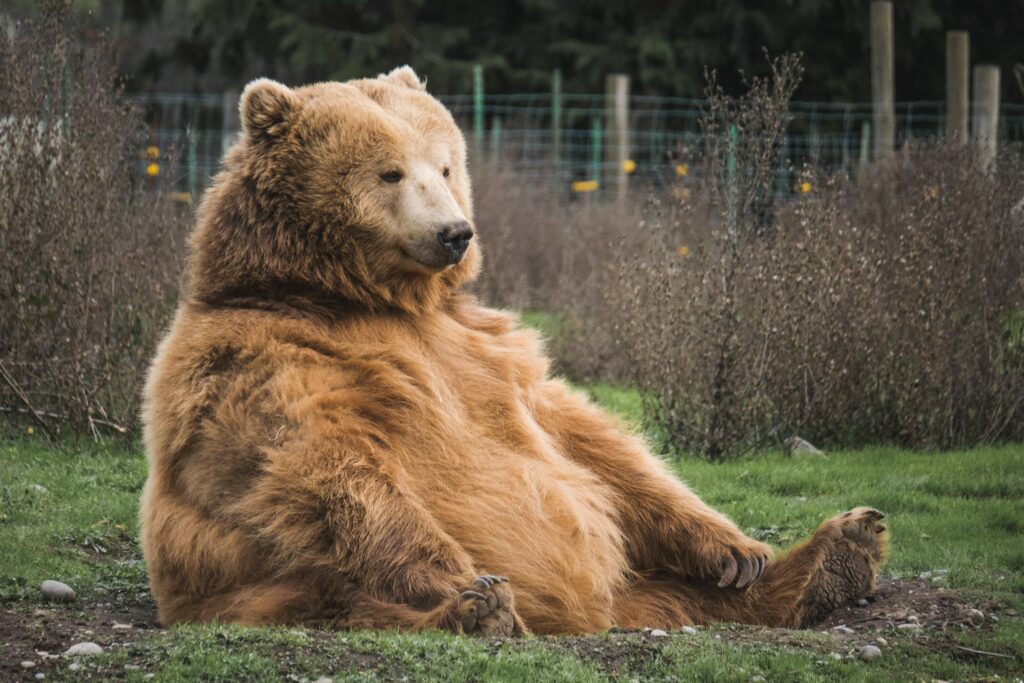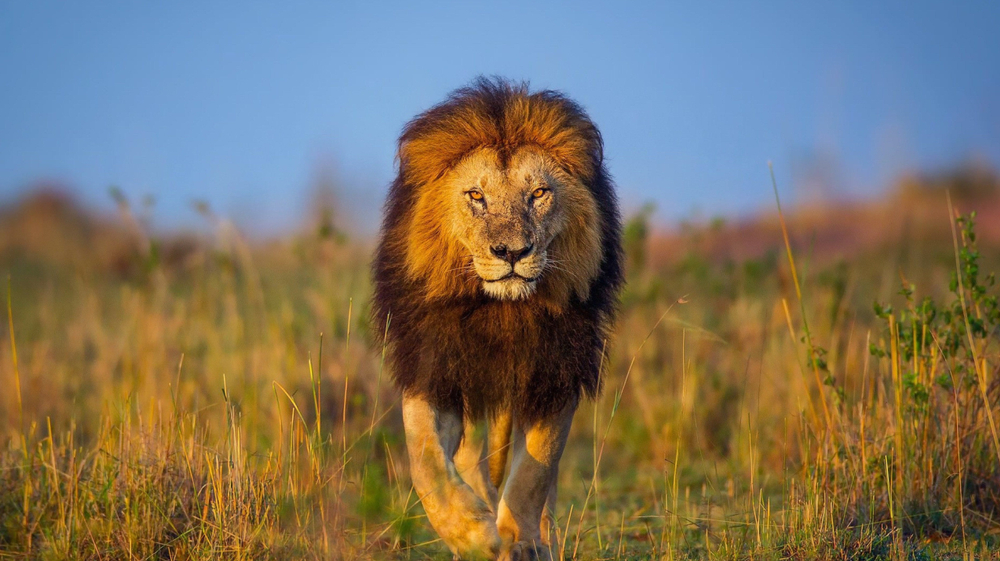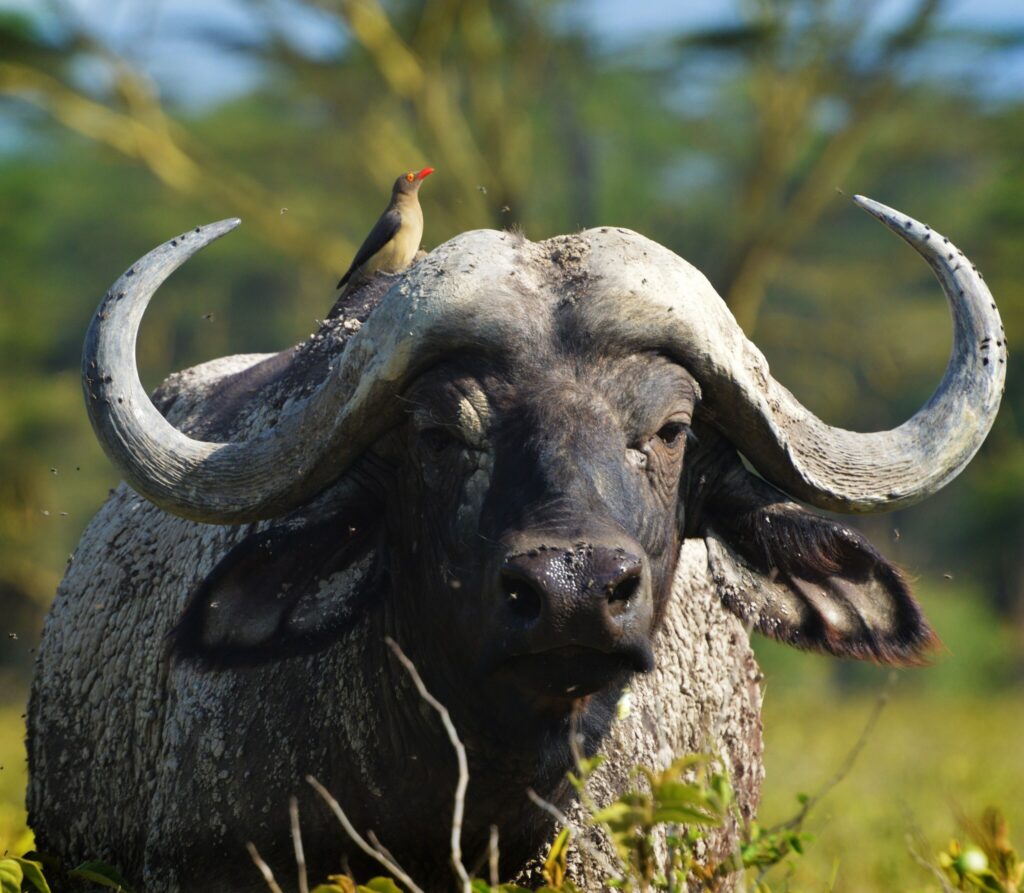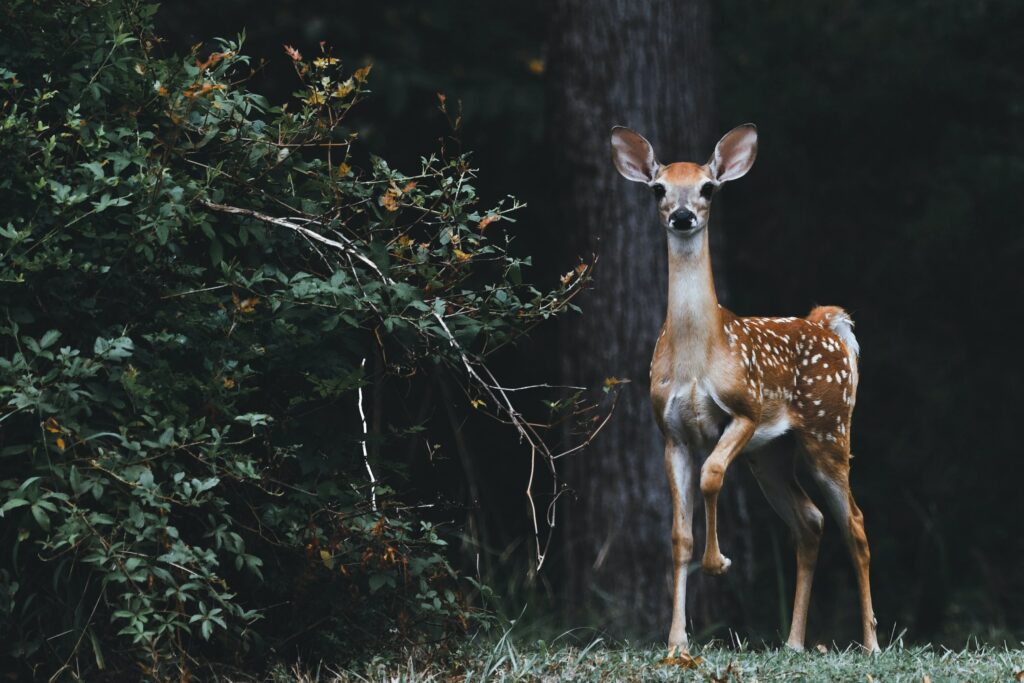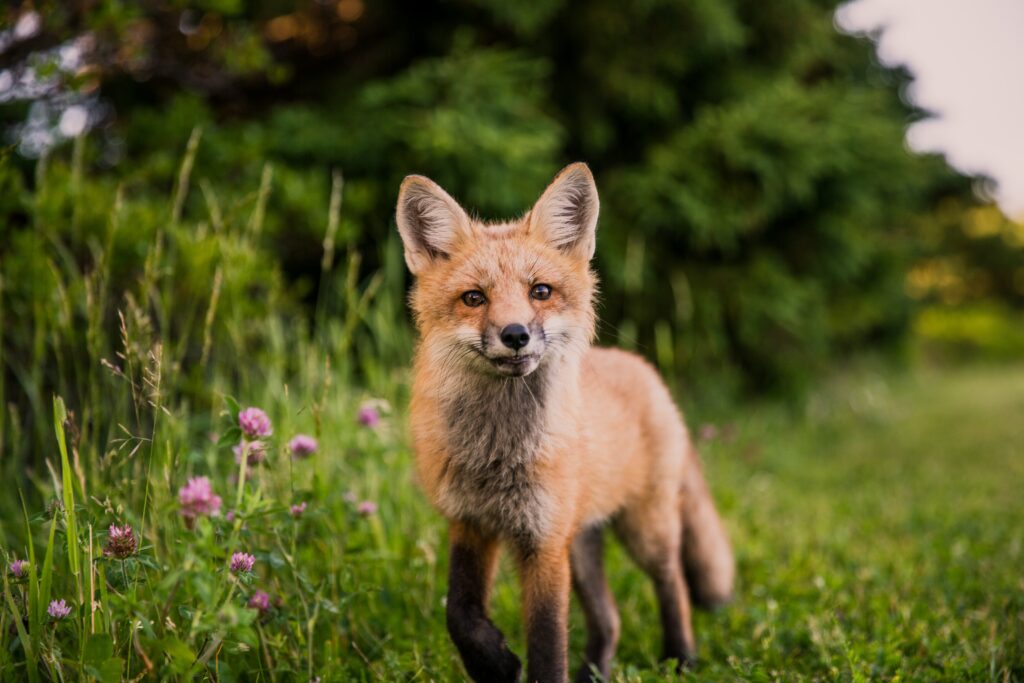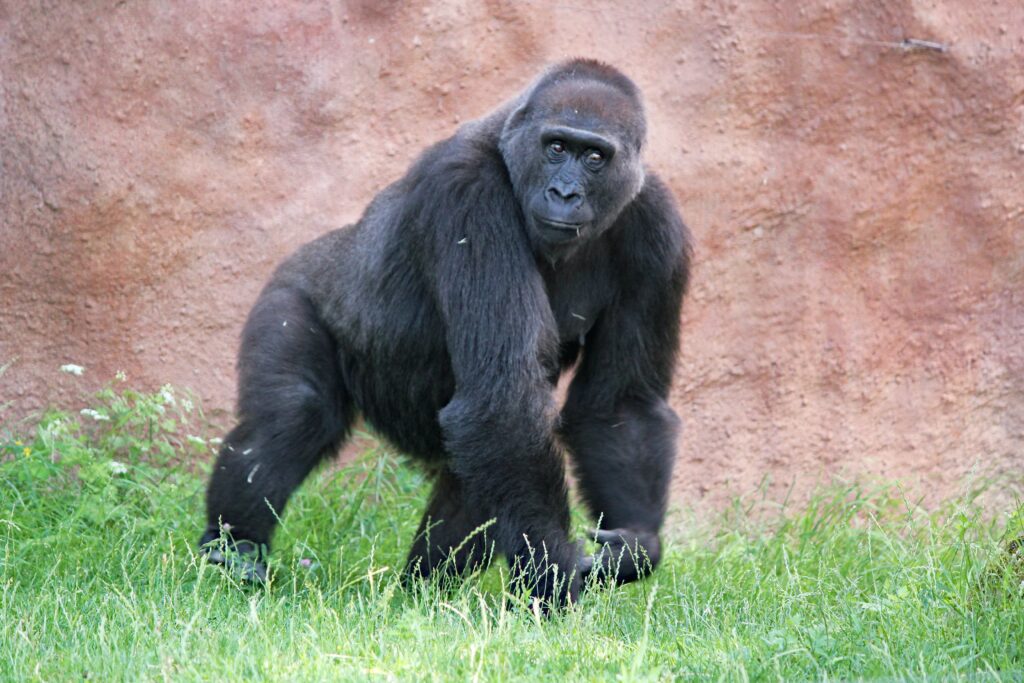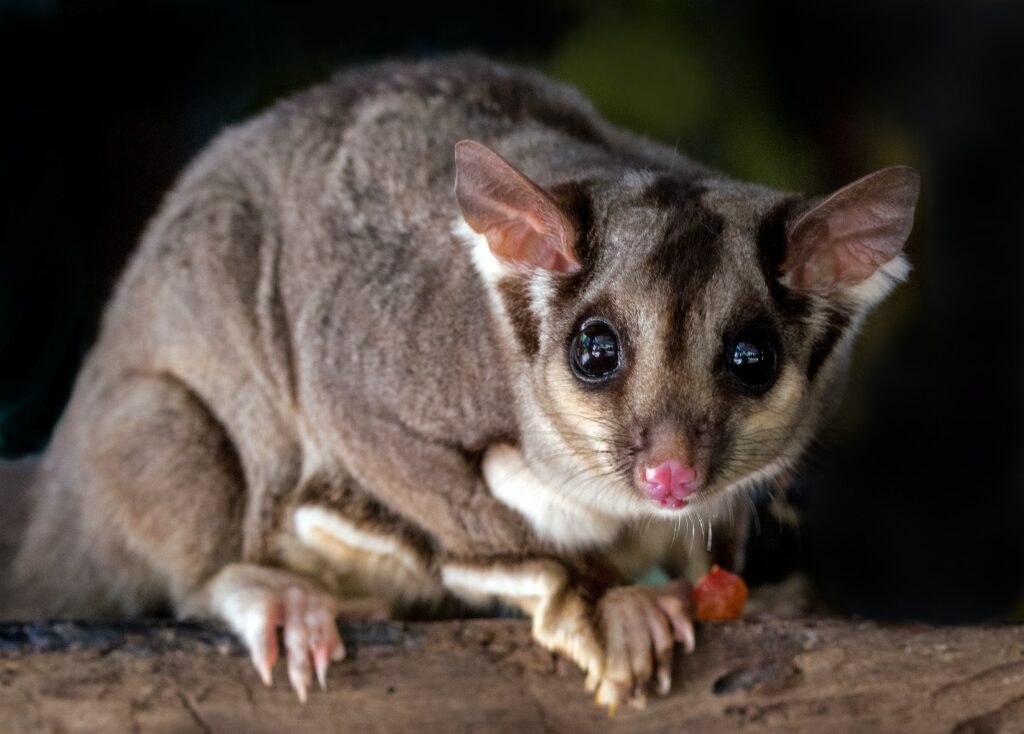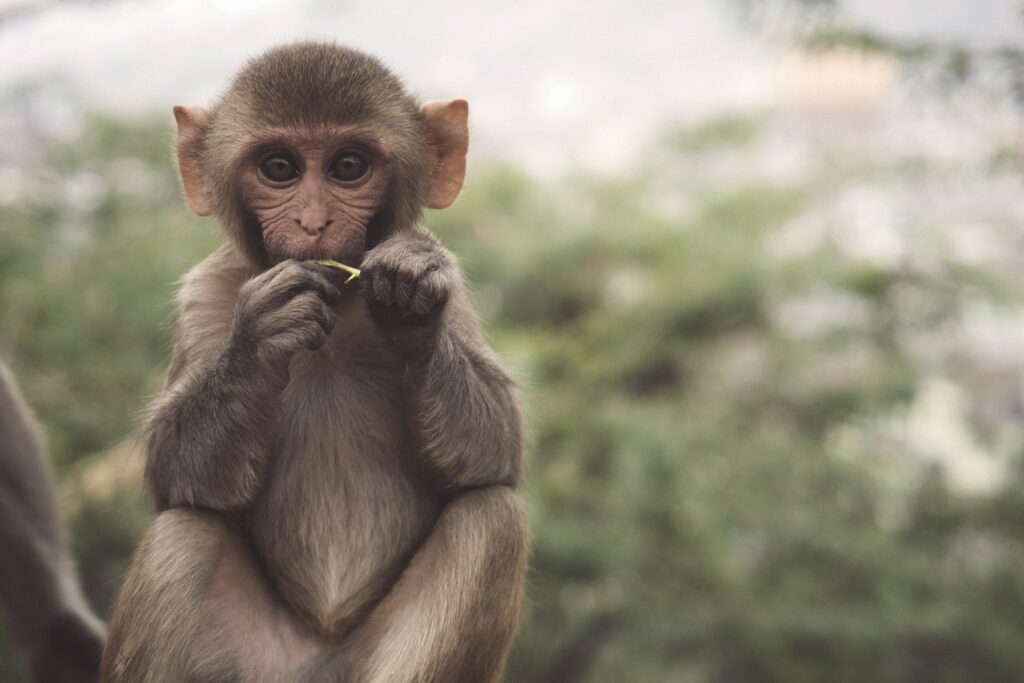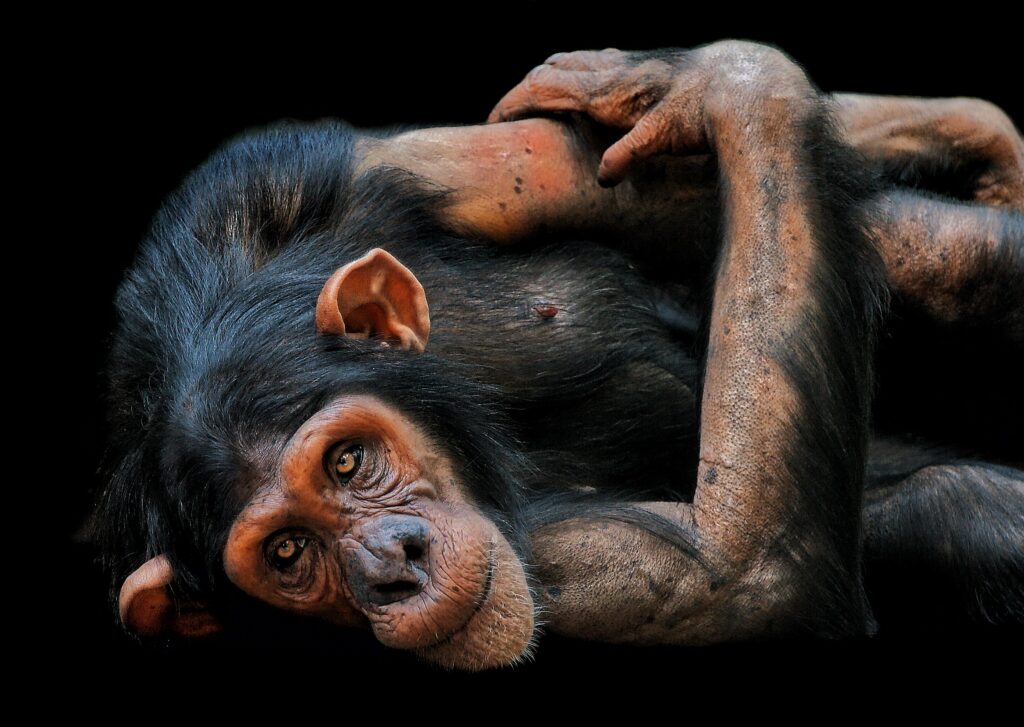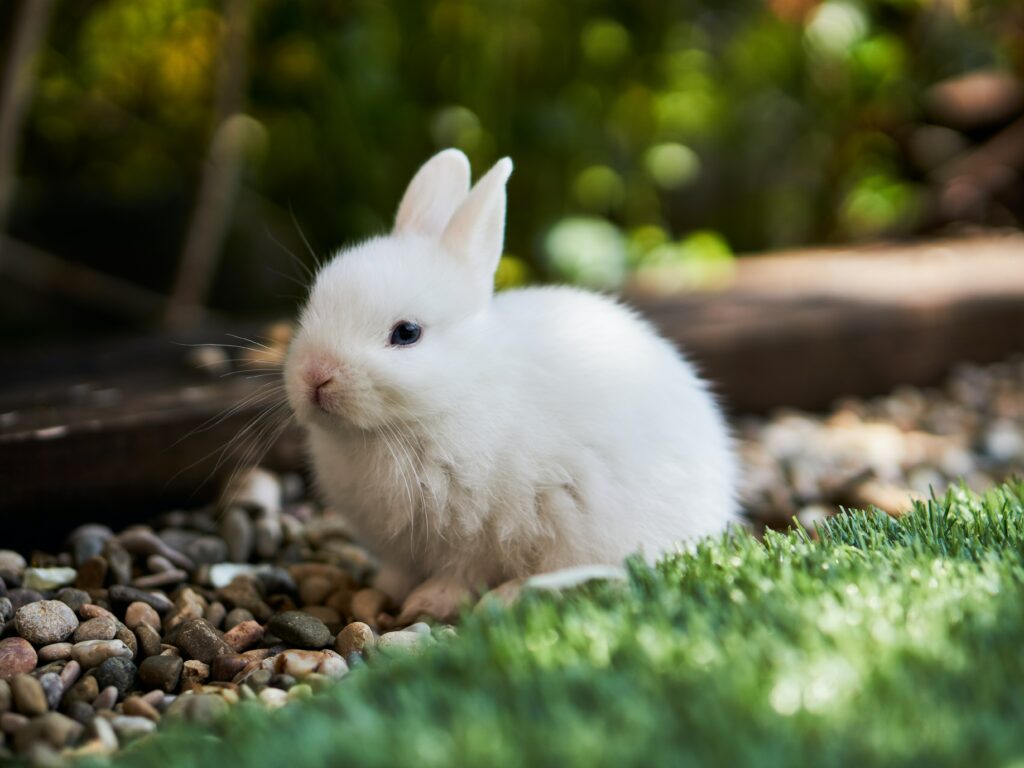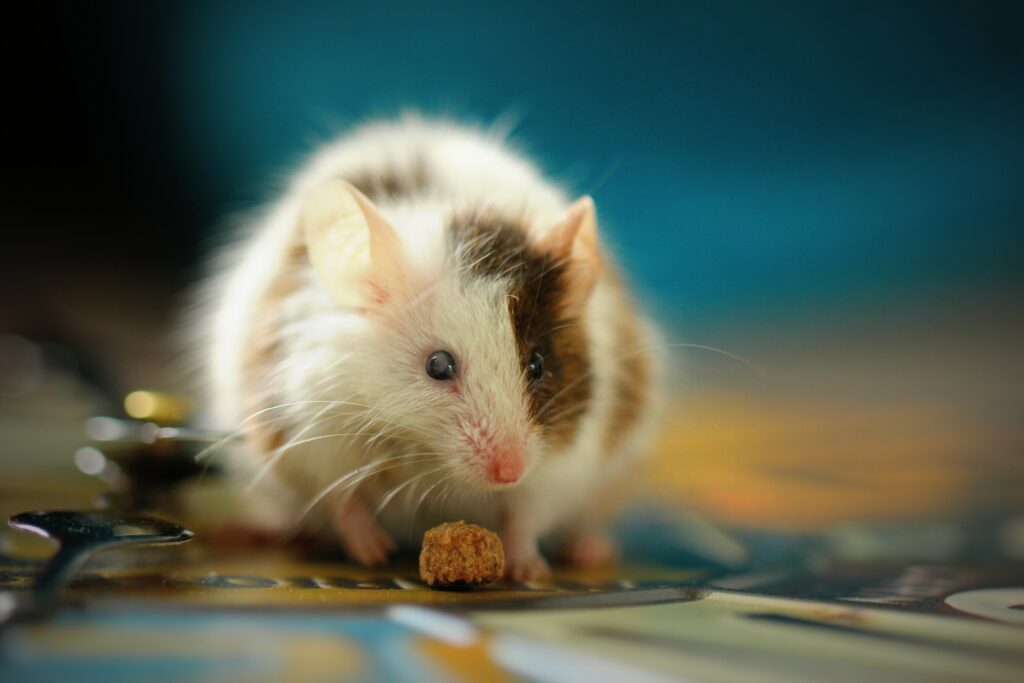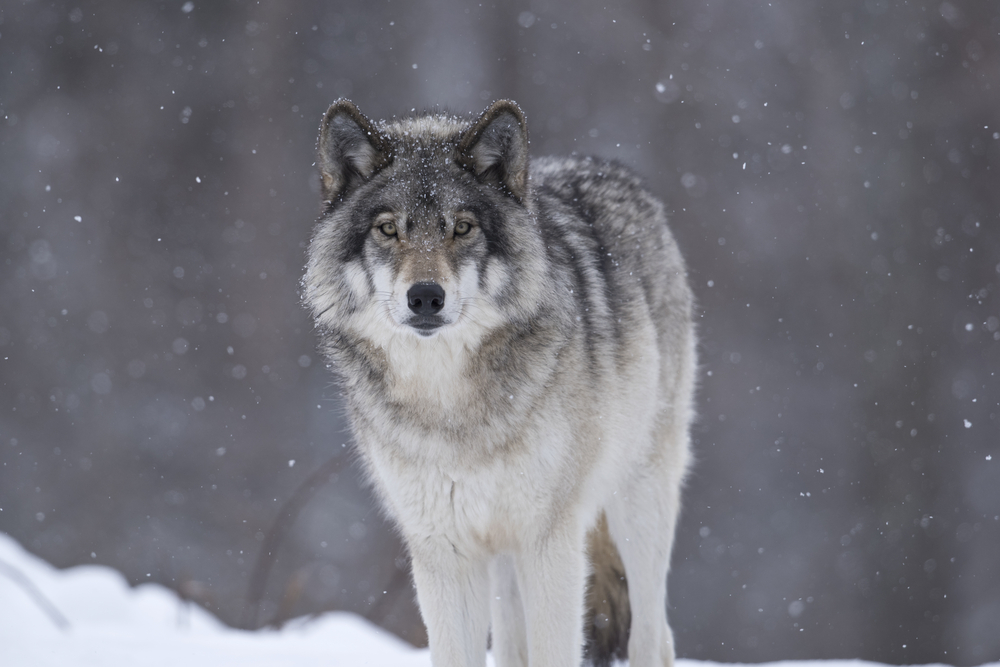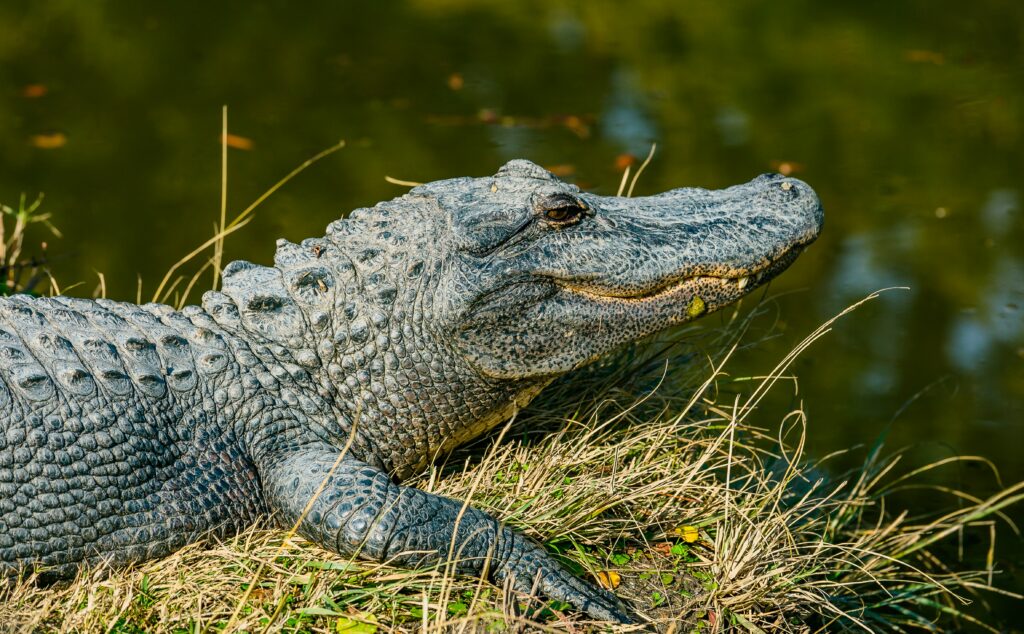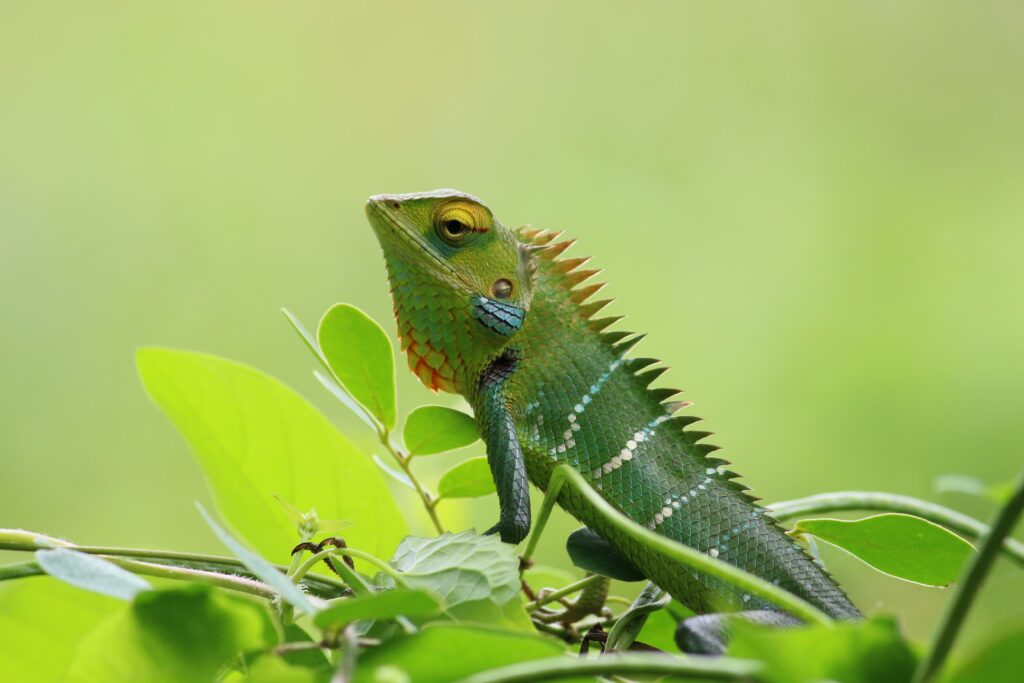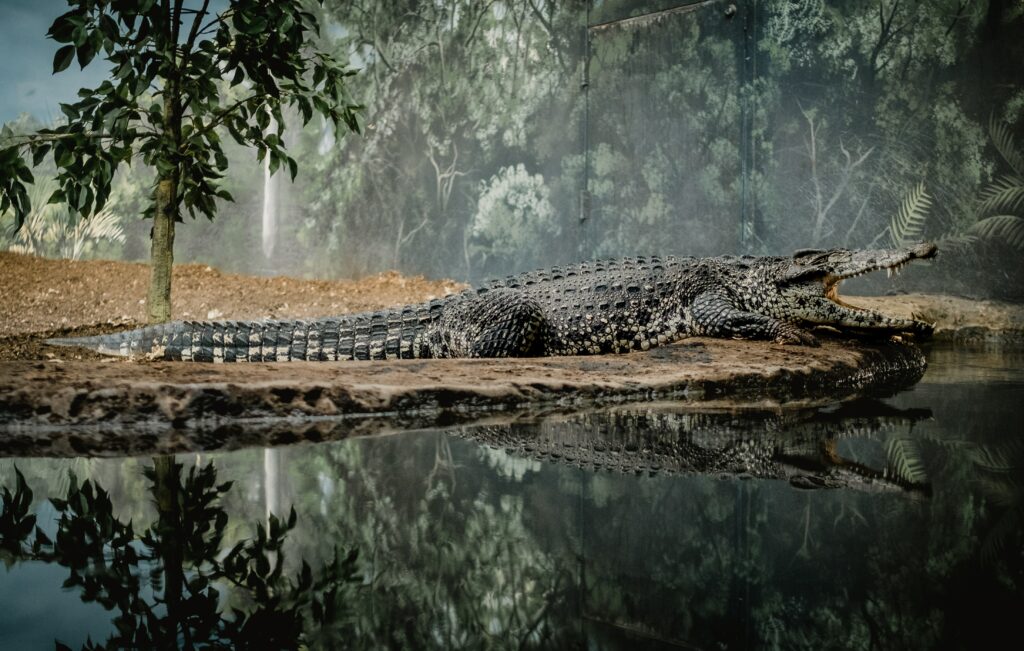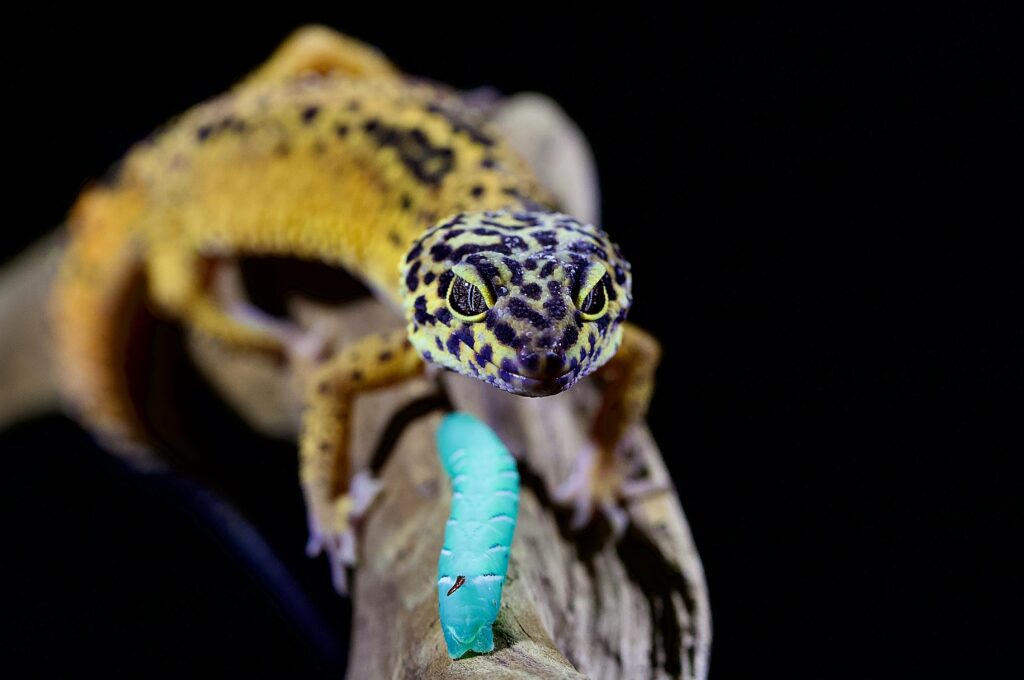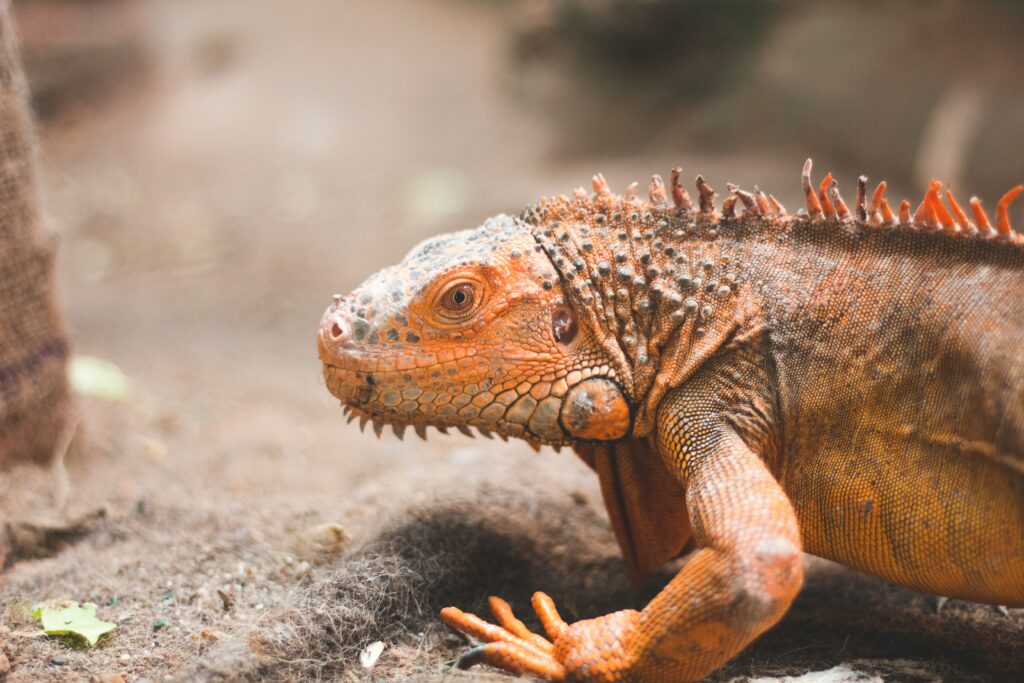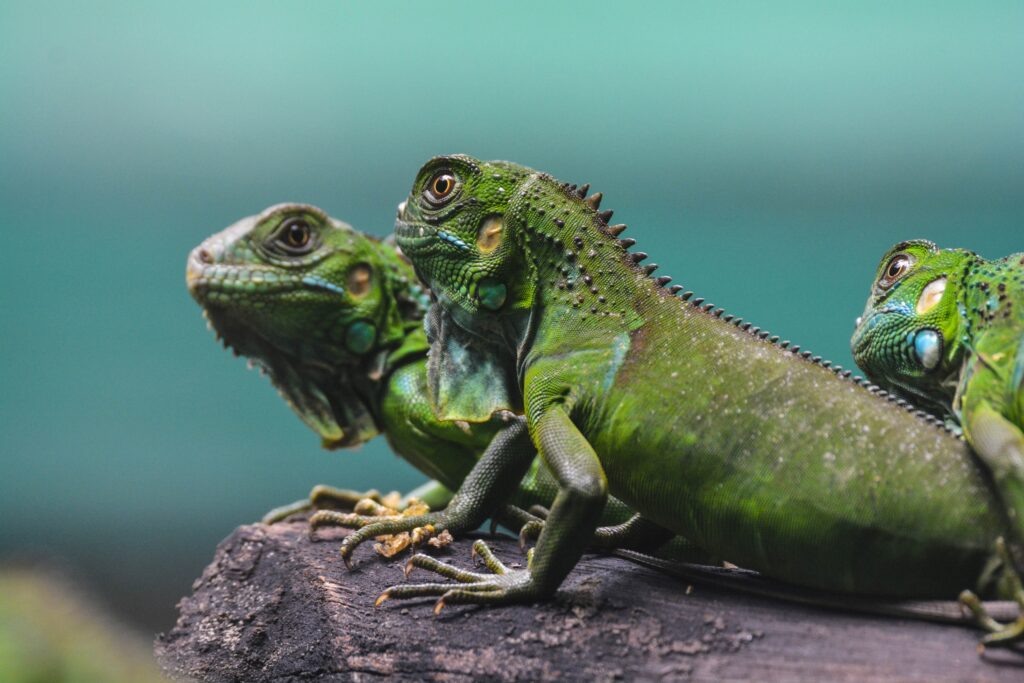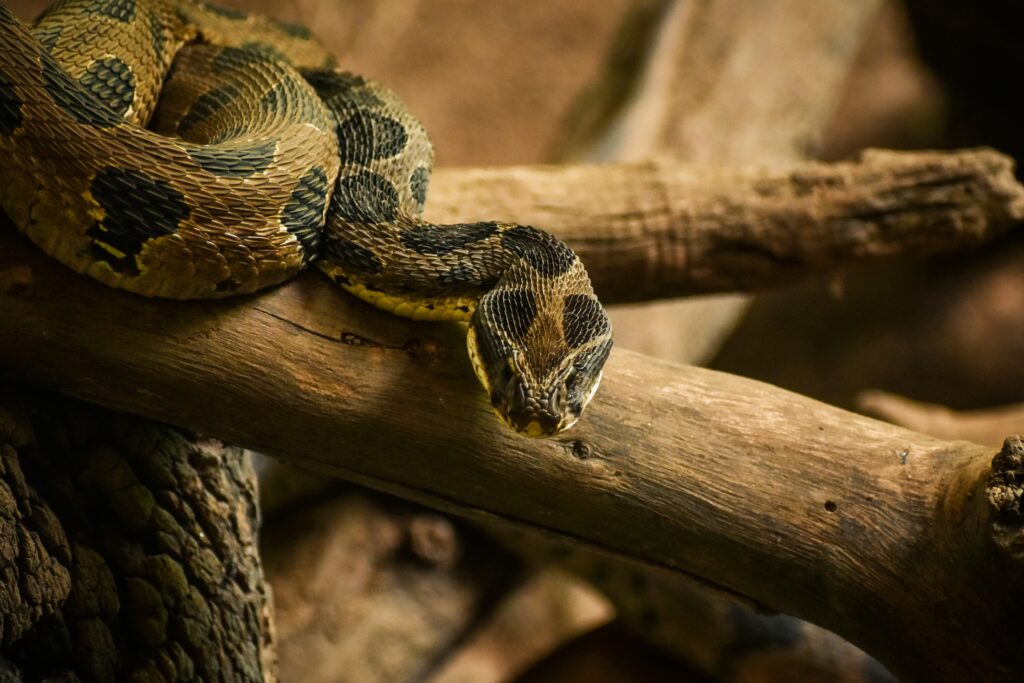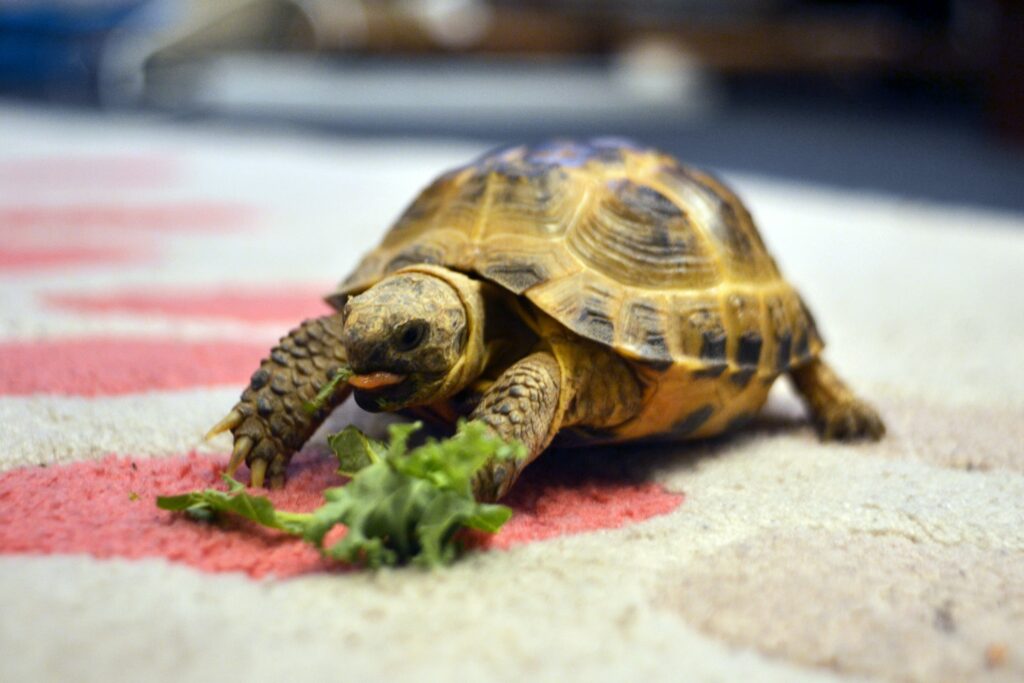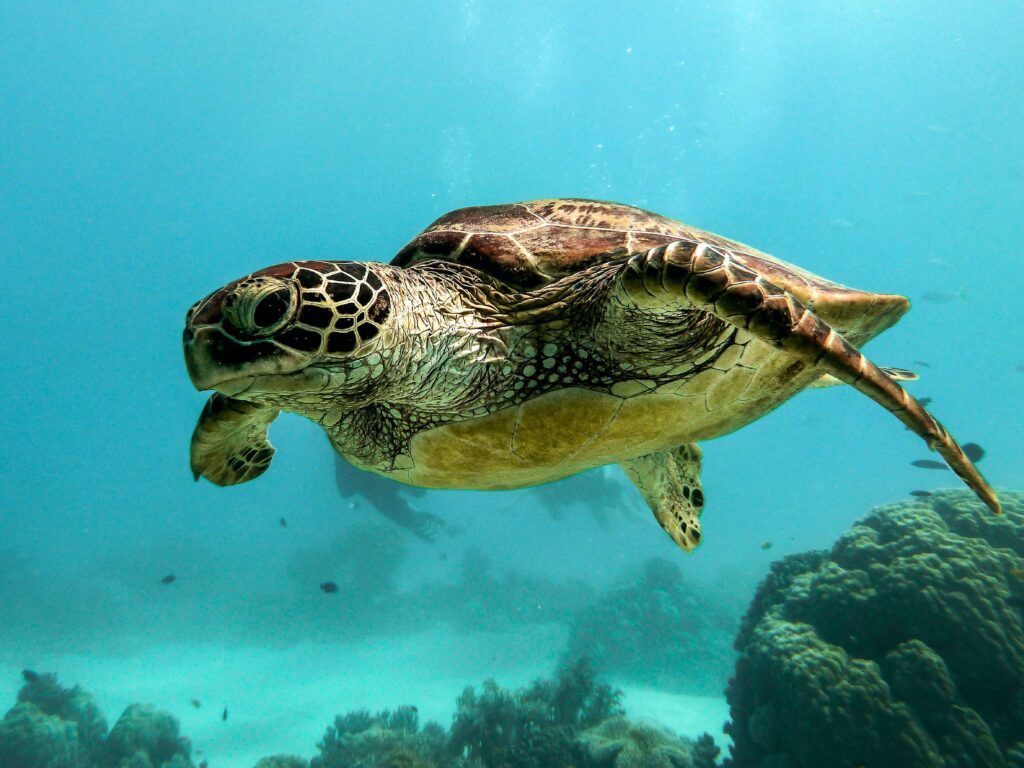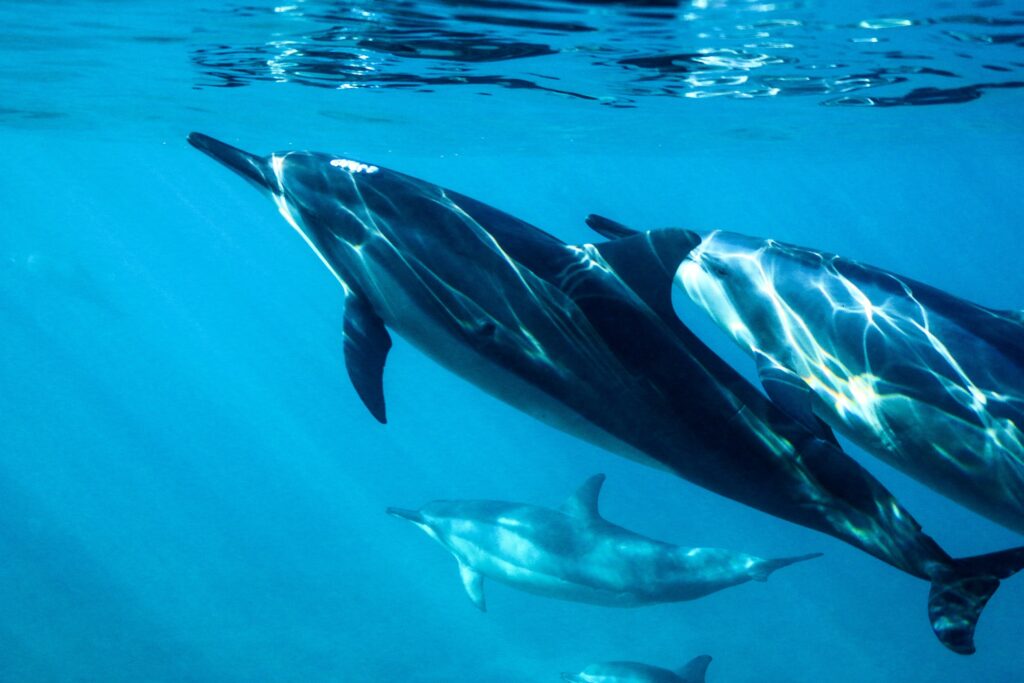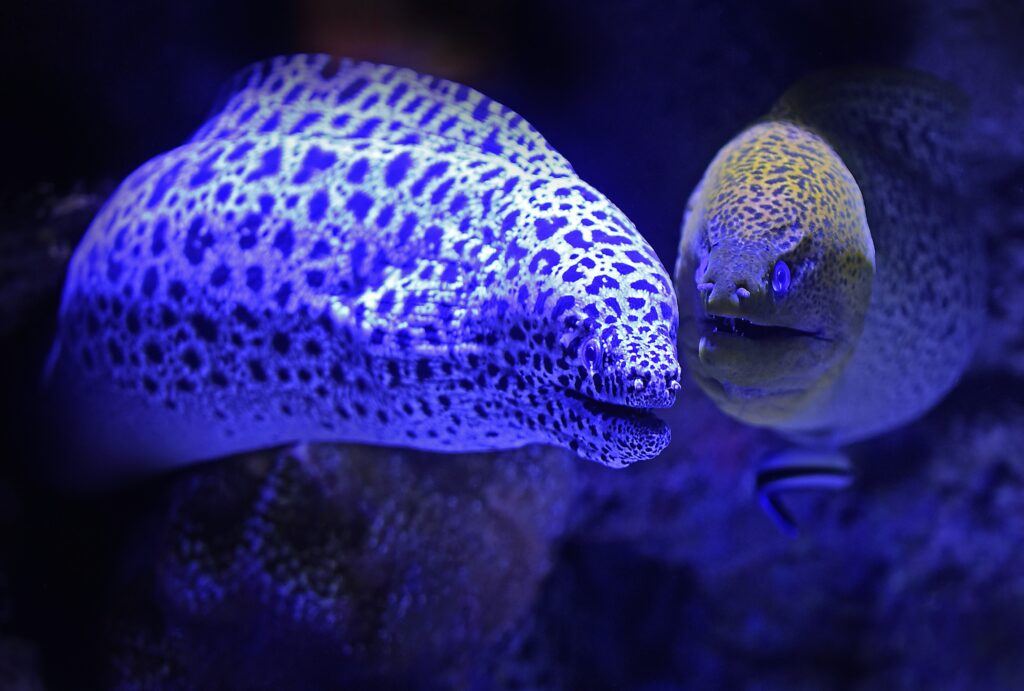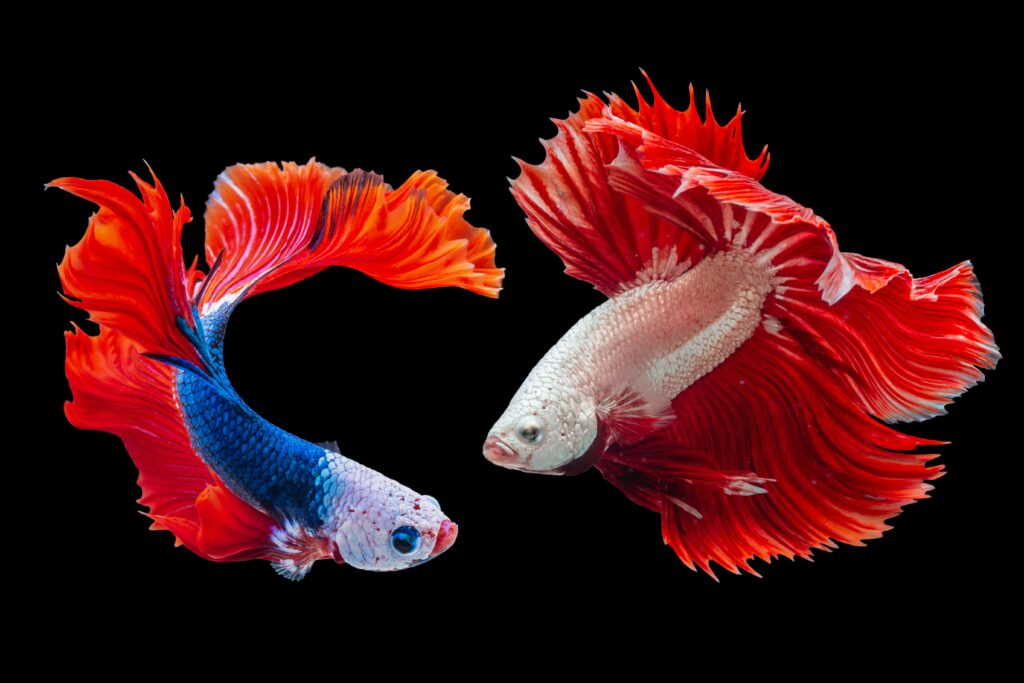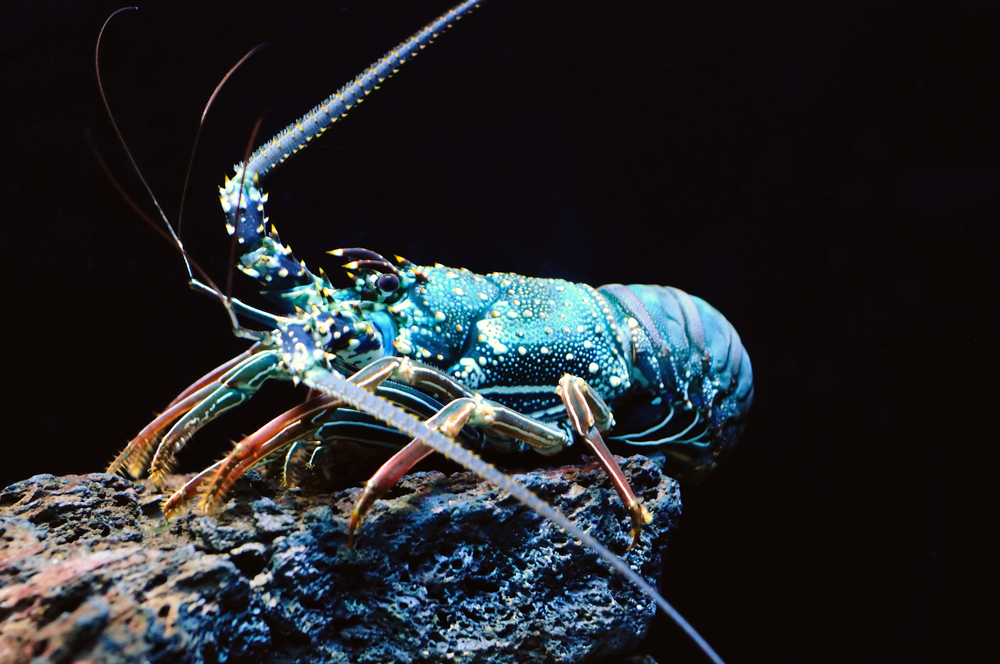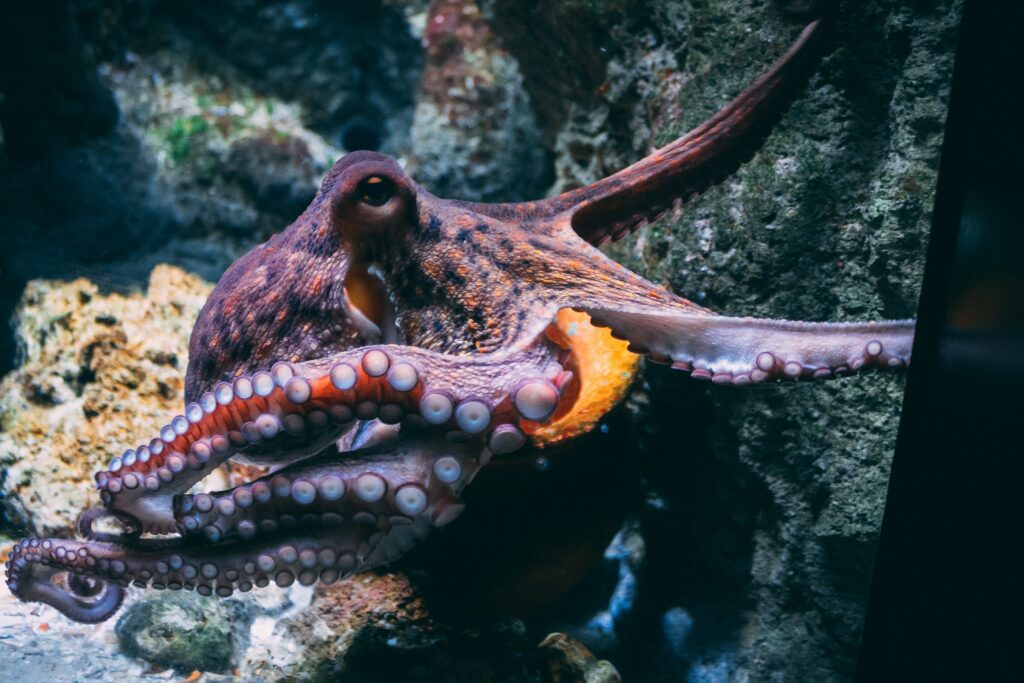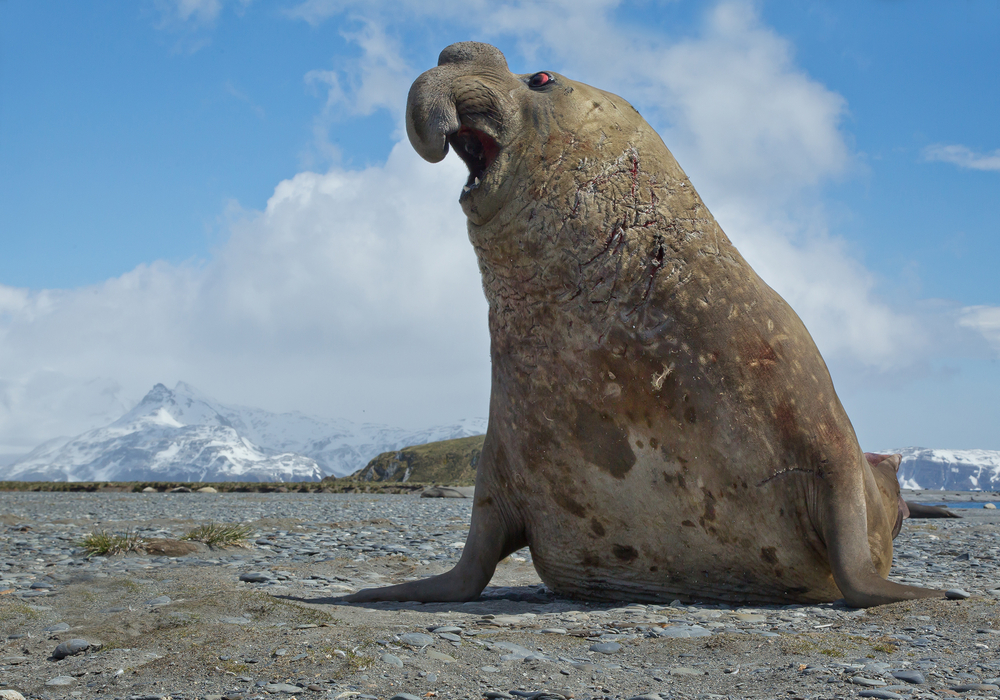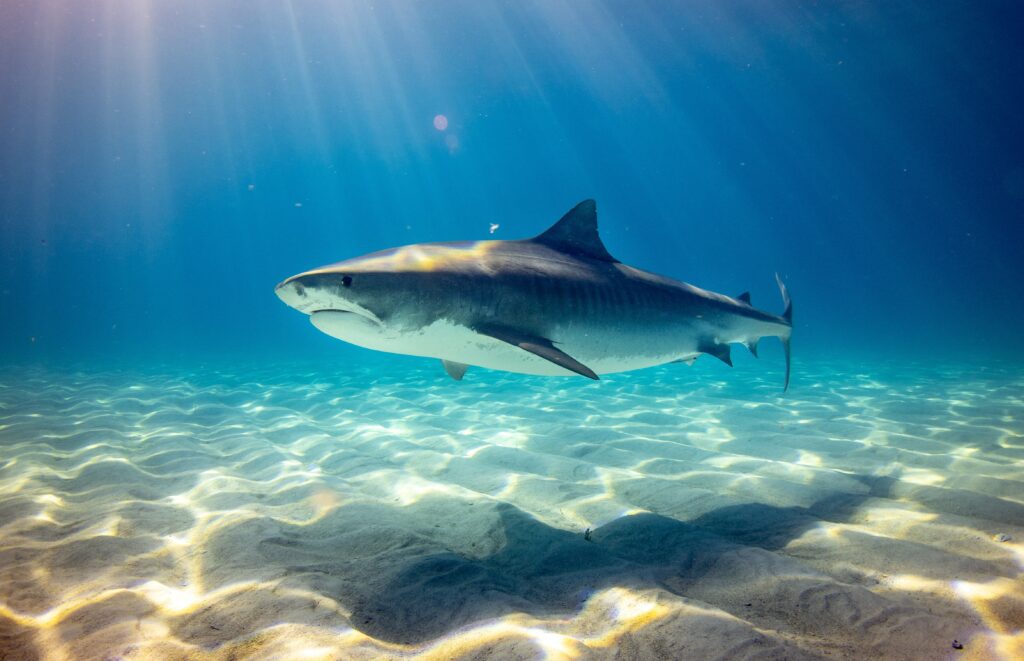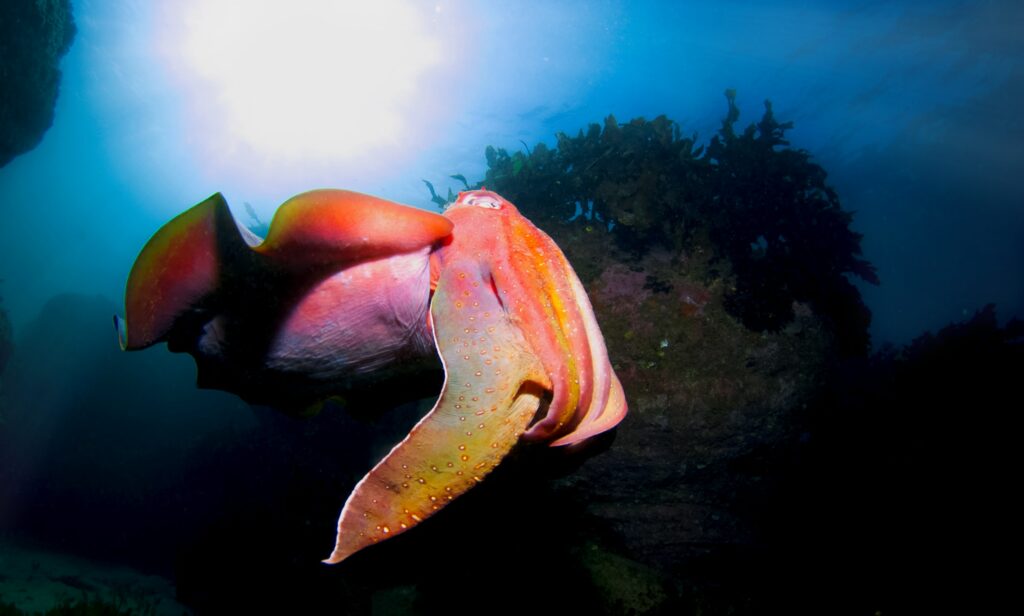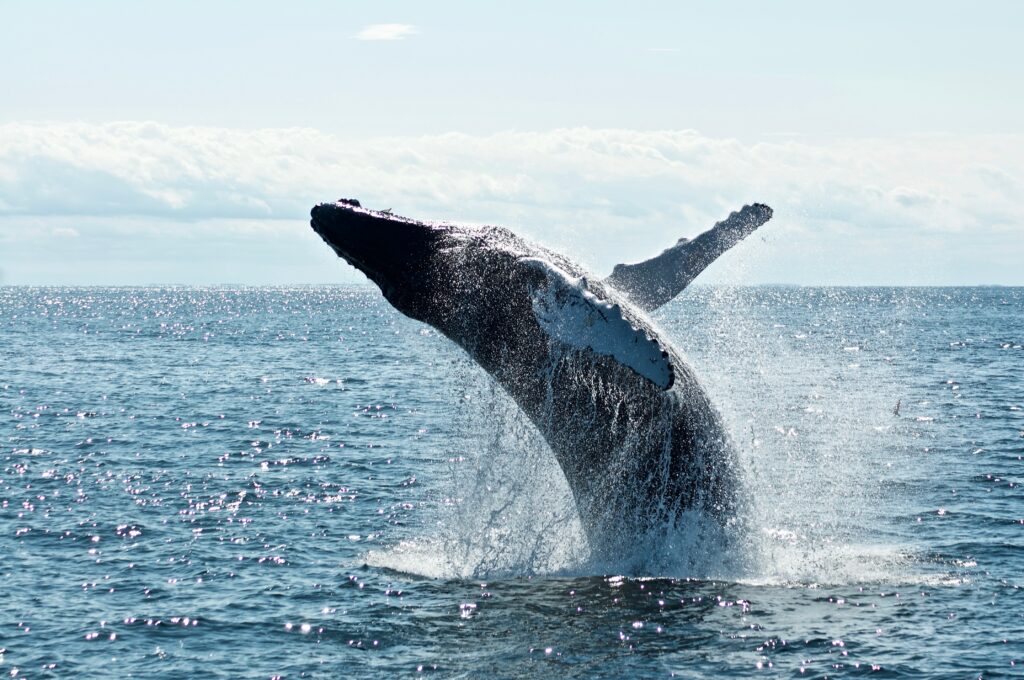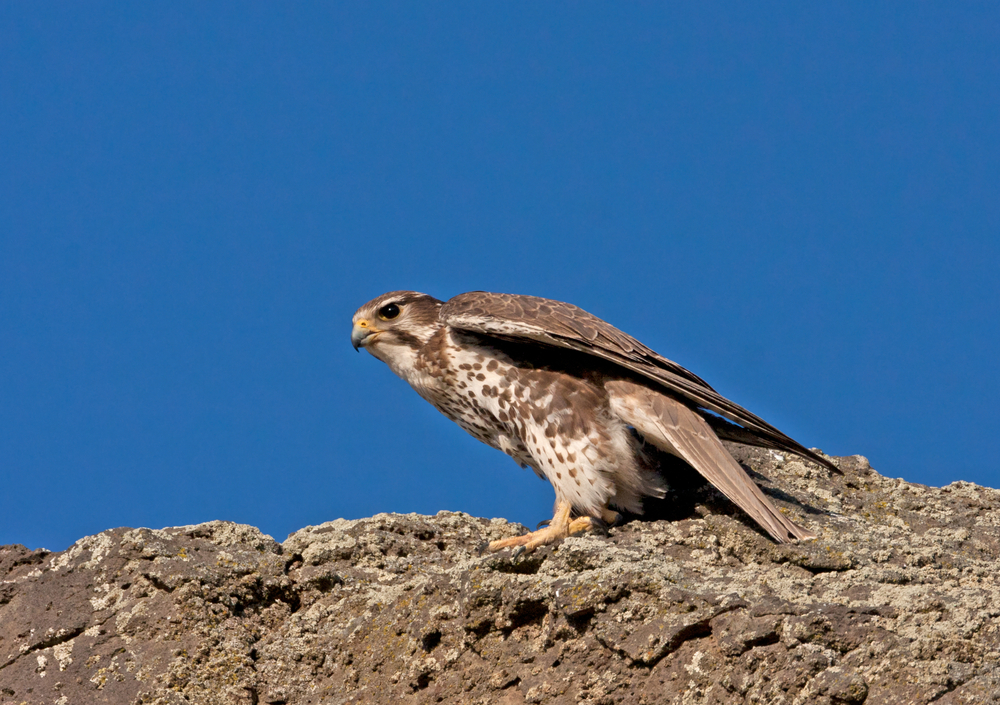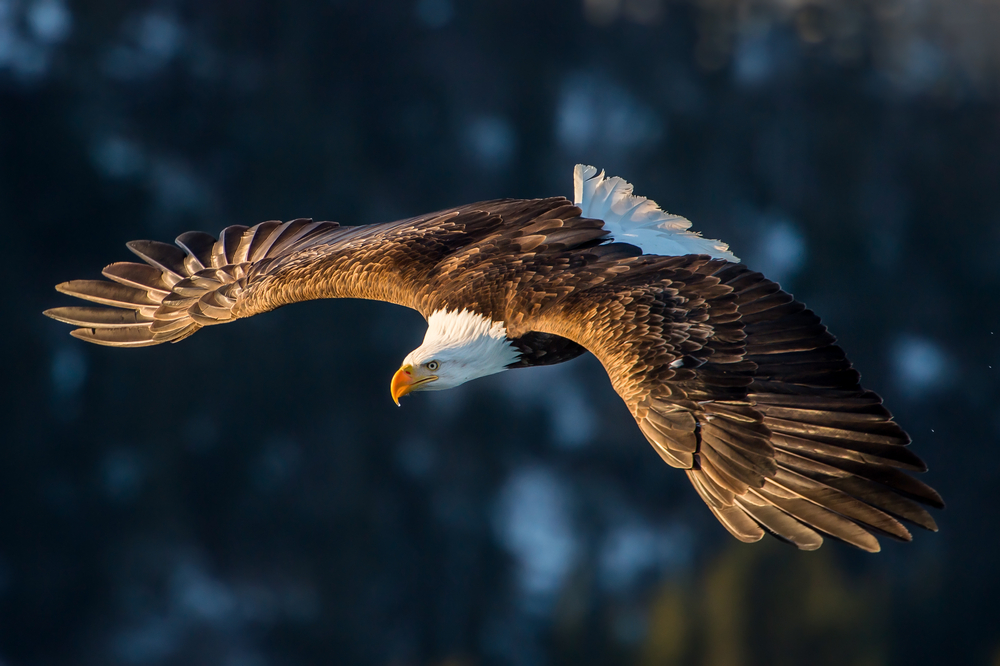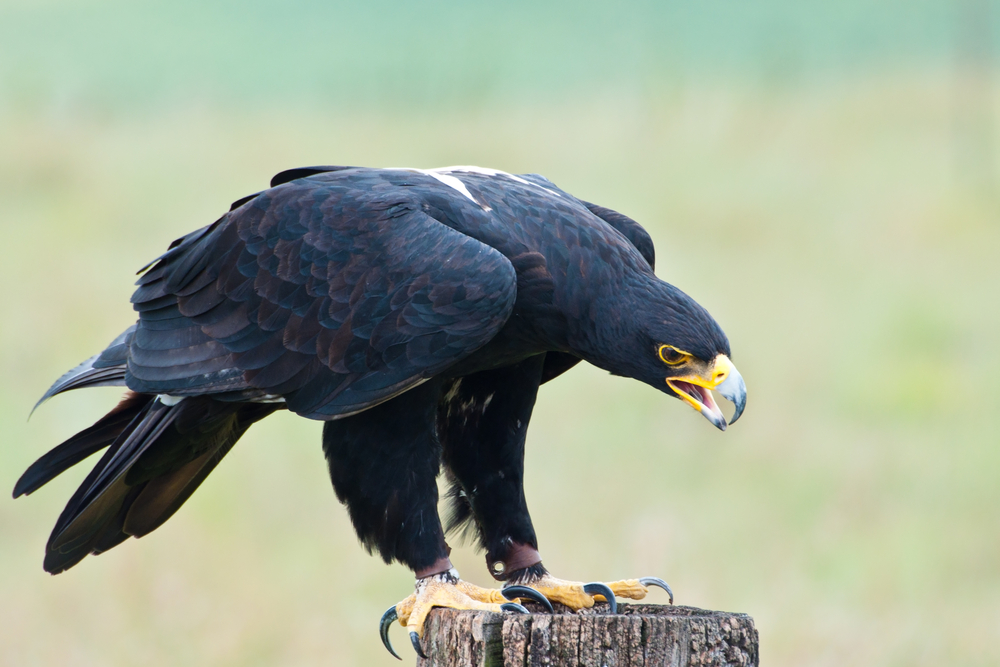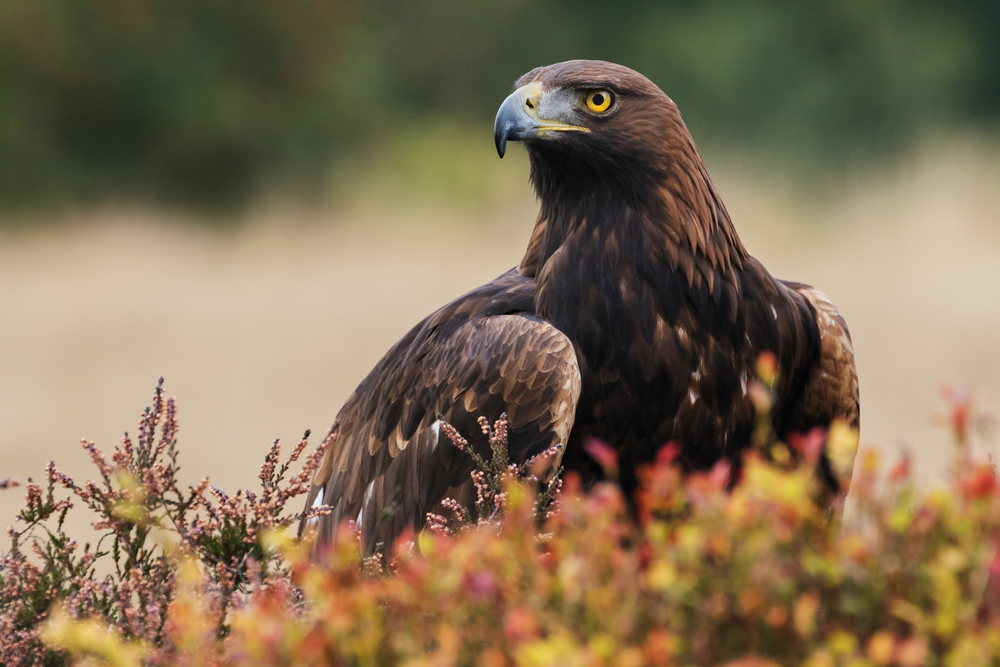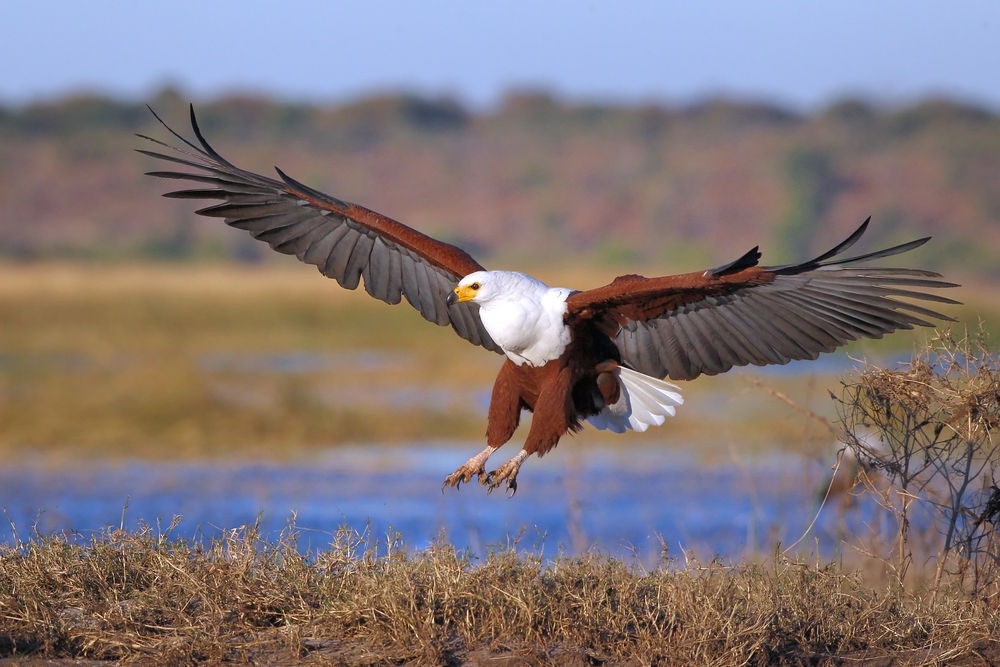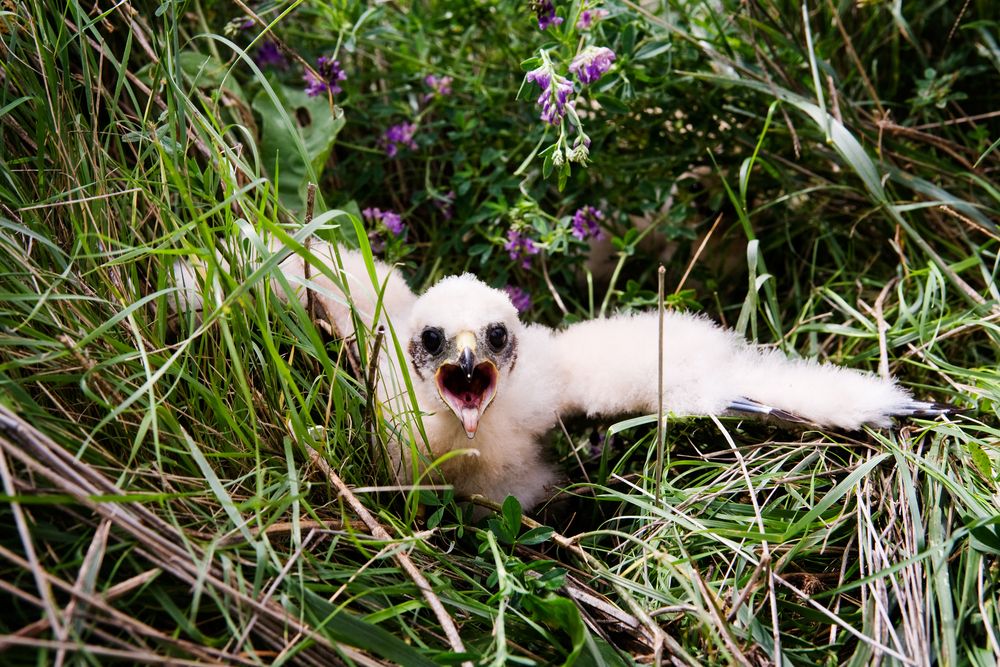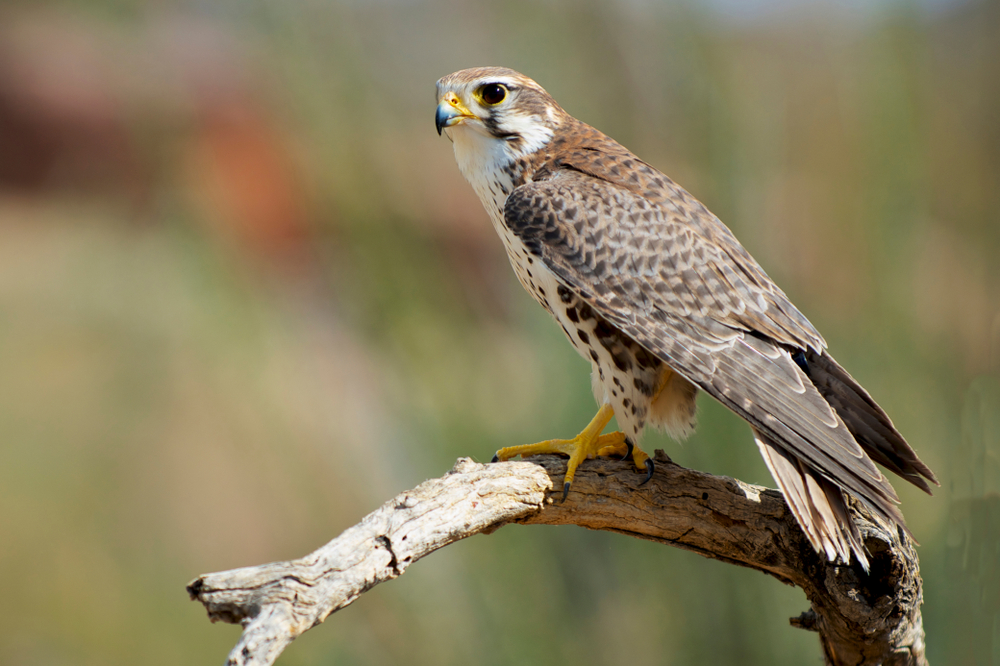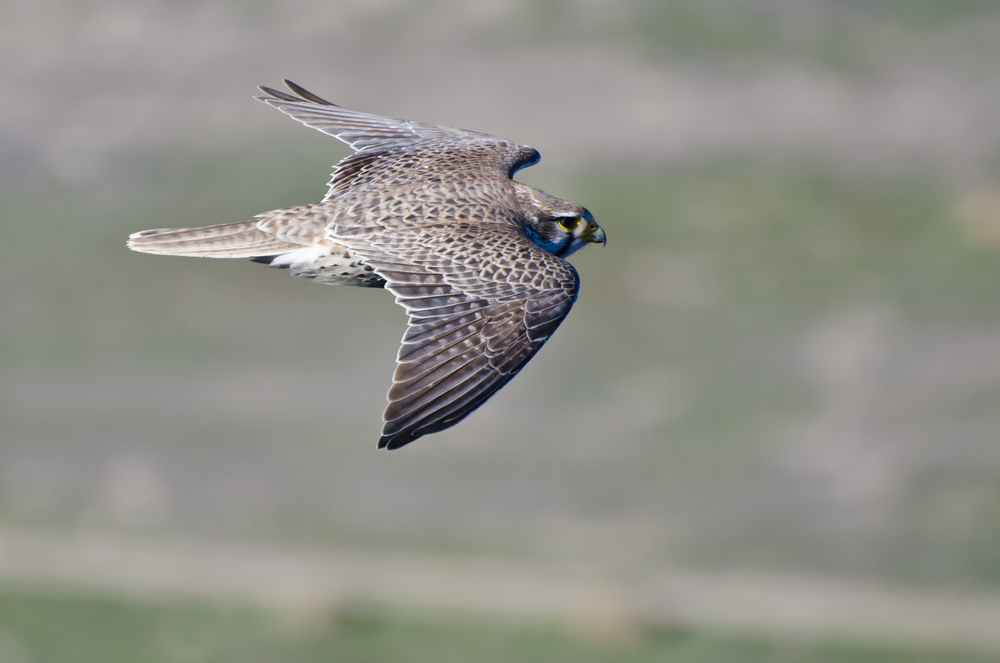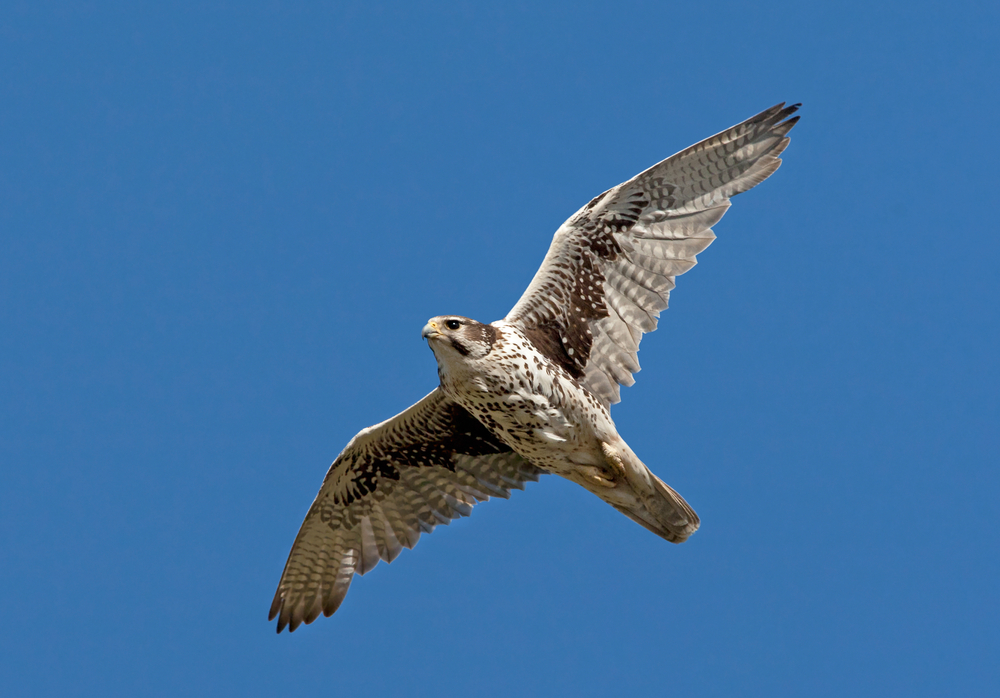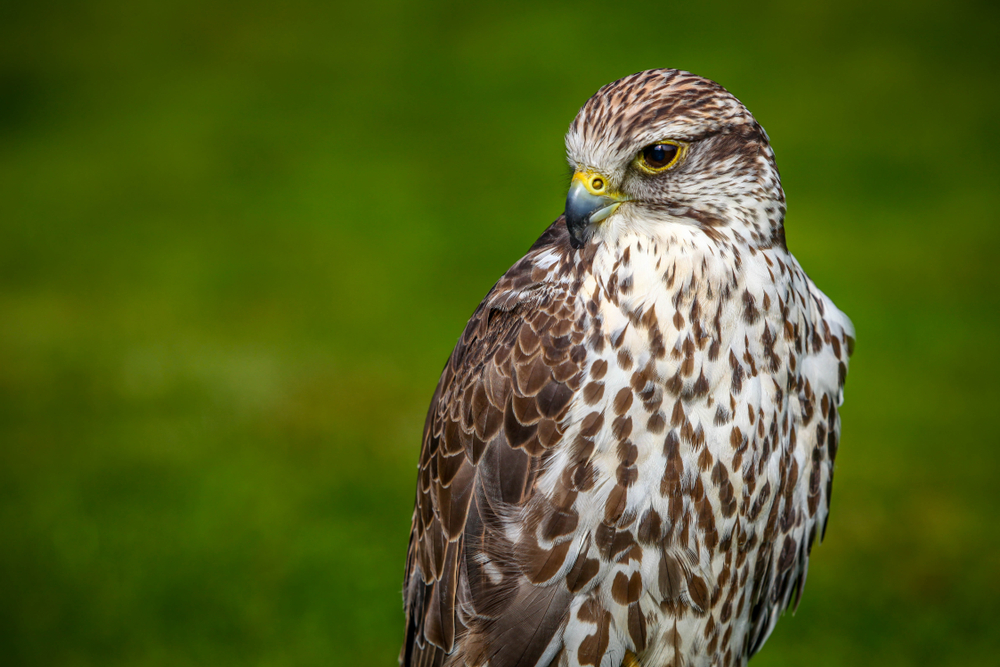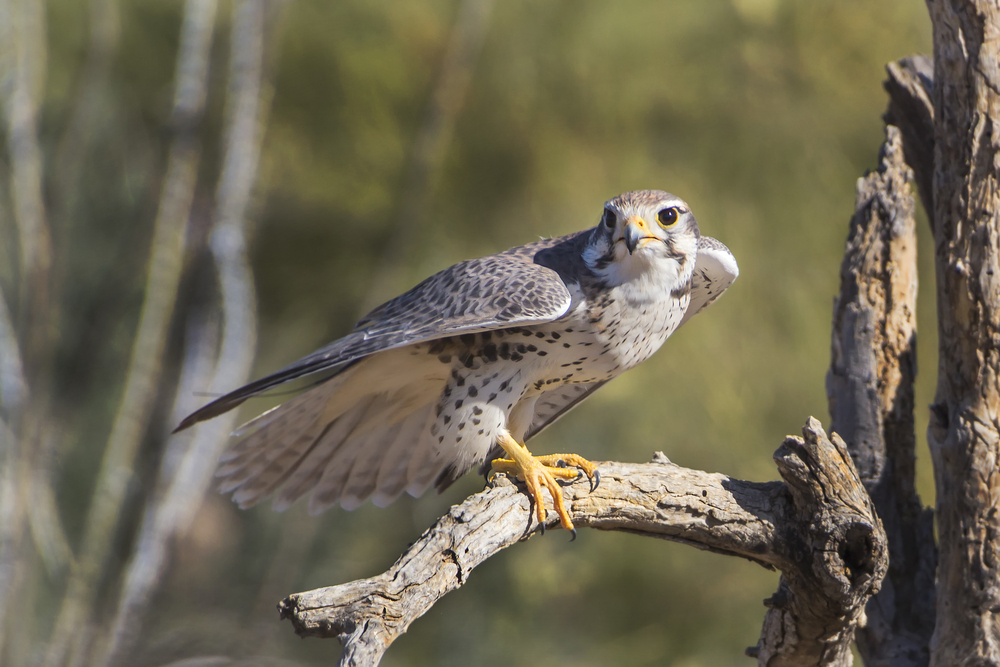About
The Prairie Falcon, scientifically known as Falco mexicanus, is a bird of prey belonging to the Animal Kingdom’s phylum Chordata and class Aves. It is a member of the Falconidae family, which also includes other raptors like the peregrine falcon and kestrels. Prairie falcons are native to western North America, where they inhabit open grasslands, prairies, and desert scrublands.
These medium-sized falcons are known for their swift flight and formidable hunting skills. They have sleek bodies, long pointed wings, and distinctive facial markings, including dark “sideburns” and a dark stripe extending from the eye to the nape. Prairie falcons exhibit sexual dimorphism, with females typically larger than males.
Prairie falcons primarily feed on small mammals, birds, and insects, which they catch in flight or by stooping from perches. They are agile hunters capable of reaching impressive speeds during pursuit. During the breeding season, prairie falcons construct nests on cliffs or rocky outcrops, where they raise their young.
Conservation Concerns
Prairie falcons face various conservation concerns, including habitat loss and fragmentation due to urbanization, agricultural expansion, and energy development. These activities can degrade nesting and foraging habitats, leading to population declines.
Additionally, pesticide use and habitat contamination pose threats to prairie falcons and their prey species, potentially impacting reproductive success and overall health. Climate change also poses challenges, affecting prey availability and altering habitat suitability.
While the conservation status of the prairie falcon varies across its range, it is generally considered a species of “Least Concern” by the IUCN Red List. However, localized declines and population trends may warrant conservation attention in specific regions.
Physical Characteristics
The Prairie Falcon (Falco mexicanus) is a medium-sized bird of prey found in the open landscapes of western North America. Known for its impressive speed and agility in flight, the prairie falcon hunts small mammals and birds across prairies, deserts, and arid mountain regions. Here’s a detailed look at the physical characteristics of the prairie falcon:
Size
- Body Length: Prairie Falcons typically measure between 14.5 to 18 inches (37 to 46 centimeters) in length.
- Wingspan: They have a wingspan ranging from 35 to 44 inches (89 to 112 centimeters), which aids in their adept hunting capabilities.
- Weight: These birds weigh between 1.1 to 2.5 pounds (500 to 1,130 grams), with females generally being larger and heavier than males.
Physical Characteristics
- Body Shape: The Prairie Falcon has a streamlined body with long, pointed wings and a long tail, both adaptations for speed and maneuverability.
- Plumage: Their plumage is predominantly light brown on the back with darker brown barring, while the underparts are pale with dark brown spots and streaks. This coloration provides camouflage against the ground when viewed from above.
- Head: The head is round with a relatively short beak. They have a distinct facial pattern with dark “moustache” marks below the eyes, which are characteristic of falcons. The eyes are dark brown, with keen vision essential for spotting prey from a distance.
- Beak: The beak is hooked, with a notch on the upper mandible that helps kill prey. It is blue-grey at the base and transitions to yellow towards the sharp tip.
- Legs and Talons: Their legs are yellow with powerful talons, crucial for grasping and killing prey. The talons are sharp and curved, providing a strong grip.
- Sexual Dimorphism: Females are noticeably larger than males, a common trait among birds of prey. However, their coloration and markings are similar.
Behavior and Adaptations
Prairie Falcons are solitary hunters, often seen flying at high speeds or hovering in search of prey. They primarily feed on small mammals, such as ground squirrels and mice, and birds, which they catch in mid-air or on the ground. Their flight style is a combination of powerful wing beats and long glides, and they are capable of remarkable aerial maneuvers during hunting and courtship displays.
They nest on cliff ledges, in crevices, or occasionally in old nests of other birds, laying a clutch of 3 to 5 eggs. The open country habitat of the Prairie Falcon, combined with its speed and agility, makes it one of the most formidable raptors in its range.
The Prairie Falcon’s physical attributes, including its speed, sharp talons, and keen eyesight, along with its adaptation to open habitats, make it a skilled predator perfectly suited to the vast landscapes of the American West.
Reproduction
Prairie falcons have a well-adapted reproductive cycle suited to their arid and open habitat. Here’s an overview:
Sexual Maturity: Prairie falcons typically reach sexual maturity at around 1 to 2 years of age, although this can vary depending on environmental conditions and food availability.
Breeding Season: The breeding season for prairie falcons usually begins in late winter or early spring, typically between February and April, varying slightly depending on geographical location and local climate conditions.
Courtship and Pair Bonding: During the breeding season, male prairie falcons engage in elaborate courtship displays to attract females. These displays may involve aerial acrobatics, vocalizations, and the presentation of food gifts to the female.
Nest Site Selection: Prairie falcons are cavity nesters, often utilizing natural cavities in cliffs, rock outcrops, or man-made structures such as abandoned buildings or nest boxes. The pair selects a suitable nest site and prepares it for egg-laying.
Egg-laying and Incubation: Once the nest site is chosen, the female lays a clutch of eggs, typically consisting of 3 to 5 eggs. She then begins incubating the eggs, while the male provides her with food throughout this period, which lasts approximately 28 to 32 days.
Hatching and Chick Rearing: After the incubation period, the eggs hatch, and the downy white chicks are born. Both parents participate in feeding and caring for the chicks, regurgitating food for them and protecting them from predators and adverse weather conditions.
Fledging and Independence: The young falcons, called eyasses, grow rapidly and develop their flight feathers within a few weeks. They fledge the nest at around 5 to 6 weeks of age but continue to depend on their parents for food and protection for several more weeks as they learn to hunt and fend for themselves.
Dispersal and Breeding Success: Once the young falcons have gained independence, they disperse from the nest area and establish their territories. Successful breeding pairs may remain together for multiple breeding seasons, while unsuccessful pairs may seek new mates in subsequent years.
Understanding the reproductive cycle of prairie falcons is crucial for their conservation, as factors such as habitat loss, disturbance at nest sites, and pesticide exposure can impact breeding success and population viability. Conservation efforts focused on protecting nesting habitats and minimizing human disturbance during the breeding season are essential for ensuring the continued survival of these magnificent birds of prey.
Lifespan
The Prairie Falcon (Falco mexicanus) is a medium-sized bird of prey found in open grasslands, prairies, deserts, and agricultural areas across western North America. Known for its swift flight and adept hunting skills, the Prairie Falcon preys on small mammals, birds, and insects, often hunting by stooping from high altitudes to surprise its prey. These raptors play important roles in controlling rodent populations and maintaining ecosystem balance in their habitats.
Lifespan in the Wild: In the wild, Prairie Falcons typically have a lifespan ranging from 10 to 15 years, although some individuals may live longer under favorable conditions. Their lifespan in the wild is influenced by various factors, including predation, availability of prey, habitat quality, and environmental conditions. Young falcons are particularly vulnerable to predation by larger birds of prey, such as eagles and owls, as well as ground-based predators like coyotes and foxes.
Lifespan in Captivity: In captivity, Prairie Falcons may have longer lifespans compared to their wild counterparts. When housed in aviaries, wildlife rehabilitation centers, or falconry facilities, where they receive regular food, veterinary care, protection from predators, and suitable habitat conditions, Prairie Falcons can live into their late teens or even early twenties. The absence of natural threats and access to consistent food and shelter contribute to their extended lifespans in captivity.
Threats to the Prairie Falcon:
- Habitat Loss and Fragmentation: Habitat loss and fragmentation due to urbanization, agriculture, energy development, and infrastructure expansion threaten Prairie Falcon populations by reducing available nesting sites, foraging areas, and suitable habitat conditions. Loss of native grasslands and prairies deprives these raptors of essential hunting grounds and nesting locations, leading to declines in population numbers and reproductive success.
- Pesticide Exposure: Prairie Falcons are vulnerable to the effects of pesticide exposure, particularly organochlorine compounds such as DDT and its metabolites, which can accumulate in their prey species and biomagnify through the food chain. Pesticides can disrupt the falcons’ endocrine systems, impair reproductive functions, weaken eggshells, and reduce chick survival rates, leading to population declines and reproductive failures.
- Collisions with Structures: Prairie Falcons are at risk of colliding with human-made structures such as power lines, wind turbines, communication towers, and vehicles. Collisions with tall structures or fast-moving vehicles can result in fatal injuries or impairments, leading to mortality, population declines, and habitat fragmentation. Proper siting, marking, and mitigation measures can help reduce the incidence of collisions and minimize their impacts on Prairie Falcon populations.
- Illegal Shooting and Trapping: Despite legal protections, Prairie Falcons may still be illegally shot, trapped, or poisoned by individuals who perceive them as threats to game bird populations or livestock interests. Persecution by humans, whether intentional or accidental, can result in direct mortality, habitat disturbance, and population declines, posing significant threats to the survival of Prairie Falcons and disrupting ecosystem dynamics.
- Climate Change: Climate change poses indirect threats to Prairie Falcons by altering prey availability, habitat suitability, and environmental conditions. Shifts in temperature patterns, precipitation regimes, and habitat composition can affect the distribution, abundance, and phenology of prey species, potentially leading to mismatches in timing between falcon breeding cycles and peak prey abundance, with consequences for reproductive success and population dynamics.
Conservation efforts aimed at protecting and restoring native grassland habitats, implementing sustainable land management practices, minimizing pesticide use, mitigating collision risks, enforcing legal protections, and raising public awareness about the importance of raptor conservation are essential for safeguarding Prairie Falcon populations and maintaining their ecological roles in western ecosystems. Collaborative approaches involving government agencies, conservation organizations, landowners, and the public are crucial for addressing these threats and ensuring the long-term viability of Prairie Falcon populations across their range.
Eating Habits
The Prairie Falcon (Falco mexicanus) is a bird of prey found in the western regions of North America. As a carnivorous raptor, its eating habits are essential for its survival and play a crucial role in maintaining ecological balance within its habitat.
Diet: Prairie Falcons are carnivorous predators that primarily feed on small to medium-sized birds and mammals. Their diet includes a variety of prey species such as ground squirrels, rodents, small birds, insects, and occasionally reptiles. They are opportunistic hunters and will target the most abundant prey available in their habitat.
Hunting Behavior: Prairie Falcons employ various hunting techniques to capture prey. They are skilled aerial hunters, using their powerful flight and keen eyesight to spot potential prey from high altitudes. Once a target is identified, they swoop down with incredible speed to strike and seize their prey with their sharp talons.
Foraging Strategy: Prairie Falcons typically hunt during the day, using open grasslands, prairies, and agricultural fields as their primary hunting grounds. They may also hunt along cliffs and rocky outcrops where their prey seeks refuge. Their hunting strategy often involves flying low to the ground or perching on elevated vantage points to scan for prey activity.
Prey Selection: Prairie Falcons are selective in their choice of prey, targeting species that are abundant and relatively easy to capture. They may focus on small mammals during the breeding season when these prey items are more abundant, while shifting their diet to include more birds during other times of the year.
Feeding Behavior: After capturing their prey, Prairie Falcons will typically consume it on the ground or carry it to a nearby perch to feed. They use their sharp beaks to tear into the flesh of their prey and consume it in bite-sized pieces. Larger prey items may be cached or stored for later consumption if the falcon is unable to consume them in one sitting.
Nutritional Requirements: Prairie Falcons require a diet rich in protein and essential nutrients to maintain their energy levels and sustain their demanding lifestyle as aerial hunters. They must consume prey regularly to meet their metabolic needs and support their high levels of activity.
Conservation Status: While not currently considered threatened or endangered, Prairie Falcons may face habitat loss and degradation due to human activities such as urbanization, agriculture, and development. Conservation efforts focused on preserving open grasslands and minimizing human disturbance in their habitat are essential for ensuring the continued survival of Prairie Falcon populations.
Uniqueness
The Prairie Falcon (Falco mexicanus) is a remarkable bird of prey known for its agility, speed, and hunting prowess. Here are some key aspects that make the Prairie Falcon unique:
Habitat and Range: Prairie Falcons are found in a variety of open habitats, including grasslands, deserts, and agricultural areas, throughout western North America. They are well-adapted to living in open landscapes where they can hunt for prey in flight.
Size and Appearance: Prairie Falcons are medium-sized falcons, with a wingspan of about 2 to 3 feet and a length of approximately 12 to 16 inches. They have a distinctive appearance, with a pale brown or buff-colored plumage on their back and wings, a lighter underbelly with streaks, and dark markings on their face and wings.
Flight Adaptations: Prairie Falcons are known for their swift and agile flight, which allows them to pursue fast-moving prey such as birds and small mammals. They have long, pointed wings and a streamlined body shape that reduce drag and enable rapid acceleration and maneuverability in the air.
Hunting Behavior: Prairie Falcons are skilled hunters that primarily prey on birds, including songbirds, shorebirds, and waterfowl. They often hunt by flying low over the ground and surprising their prey with a sudden burst of speed. In addition to birds, they may also catch insects, small mammals, and reptiles.
Breeding and Nesting: Prairie Falcons typically breed in rocky cliffs, bluffs, or other elevated sites that provide a vantage point for hunting and nesting. They construct simple nests made of sticks, grass, and other vegetation, often in shallow depressions or crevices on the cliff face. Females lay a clutch of 2 to 5 eggs, which are incubated for about a month before hatching.
Territorial Behavior: Prairie Falcons are territorial birds and will defend their nesting territory from intruders, including other birds of prey. They may engage in aerial displays and vocalizations to deter potential threats and assert dominance over their territory.
Conservation Status: Prairie Falcons are not currently considered threatened or endangered, although they may face localized threats from habitat loss, pesticide use, and human disturbance. Conservation efforts focused on preserving suitable nesting and foraging habitat are important for maintaining healthy populations of Prairie Falcons throughout their range.
Prairie Falcons’ unique adaptations for flight, hunting behavior, and nesting habits make them fascinating and important predators in the ecosystems they inhabit. Studying and conserving these birds can provide valuable insights into the health of grassland and desert ecosystems in North America.
Related Family Species
Sources
- Burnie, David & Wilson, Don, Animal, Smithsonian Institute, Washington DC.
- Hickman et al, Integrated Principle of Zoology, McGraw Hill, Boston.
- Paragon, The Ultimate Guide to Wildlife in North America, Atlantic Publishing, UK.
